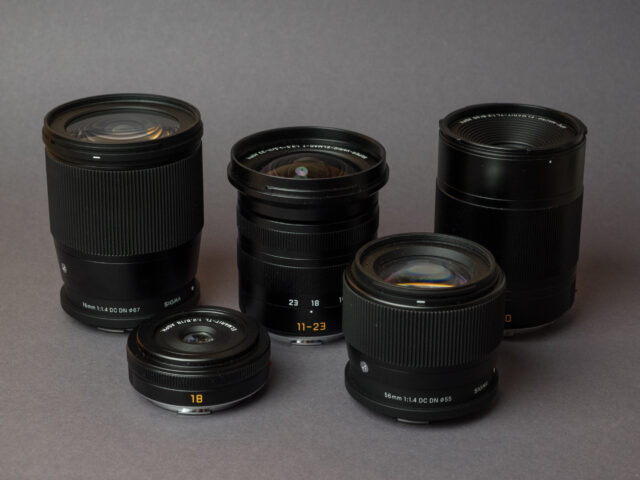
With the discontinuation of Leica’s APS-C cameras, many owners are facing the prospect of ending up with orphan lenses. Even good cameras such as the CL will quit their service one day. So what to do with your lovely 35 Summilux TL or your stunning 11-23 Super-Vario-Elmar-TL? If you need state-of-the-art resolution, three cameras in crop mode are available: Sigma’s fpL, Panasonic’s S1R and, of course, the Leica SL2. This article discusses the pros and cons.
It’s a pity, to say the least. Without actively communicating it, Leica abandoned their APS-C system — and probably some customers along the way. The latter is a bit strange to my eyes. Either these customers were very few, or they were not up to Leica’s standards (that is, not rich enough). In effect, the brand has lost an option for an entry-level system. As our editor Mike Evans recently pointed out in an interesting article, Fuji have more appreciation for this segment. And both Canon and Nikon are even actively courting this target group. Leica moves in a mysterious way, its wonders to perform….
Leica’s APS-C exit: Barnack’s alleged legacy got dumped only five years later
Do you remember the introduction of the Leica CL back in 2017? It was marketed, not unconvincingly, as the camera that Oskar Barnack would have built today: Small, lightweight, versatile. Unfortunately, the handling of Barnack’s legacy did not prove to be particularly prudent in this special case. Five years later, the whole Leica APS-C system is dead. But really, the whole Barnack thing was just marketing anyway. Oskar would probably turn in his grave if he had to witness all this: First the big words and then the meek exit.
There are still some wonderful Leica APS-C and other lenses around
In effect, a certain number of L-Mount lenses will remain that can only cover the Leica APS-C image circle (sensor size 23.6 x 15.7 mm in case of the CL). And there are some wonderful products among them (I will go into more detail in a later article perhaps). Here it will suffice to mention two of Leica’s primes, 35 and 60, the three very affordable Sigma 1.4 primes (16, 30, 56 translating into 24, 45, 84) and the value-for-money monster Sigma 18-50/2.8. These and some more lenses will outlive Leica’s bodies for sure. The APS-C lenses were even designed to set entirely new standards, as Leica’s Peter Karbe explains in this interesting lecture and discussion with Nick Rains from Leica Australia.
One thing that Leica did right with their APS-C system
So what to do? Luckily, Leica designed their new mirrorless system (you remember, it was first called T system until, allegedly, the German telecommunications giant made clear that T-Systems was their own trademark) with higher ambitions in mind: It was clear from the start that Leica APS-C would be followed (or superseded?) by Leica full frame. The T mount turned into L-Mount, which proved wide enough to support a full-frame sensor and full-frame lenses. The engineers already developed it with this goal in mind. This was quite clever back then. Canon had their own APS-C mount that was always a turn-off for prospective buyers (that’s what dealers told me, standing in front of shelves full of EOS M Mount gear).
Leica leaves APS-C, and other manufacturers enter
These days, however, Canon and Nikon offer a universal mount for full frame and APS-C. Sony have been using E mount for both sensor sizes for quite some years, but they are showing little interest in the smaller sensor line. Still, it almost looks like Leica’s APS-C withdrawal was an exit from a growing idea. They have their reasons, and a small manufacturer can’t run with the hare and hunt with the hounds. So they may have made the cool decision that the full frame market is just promising more profit.
How many pixels do you need in APS-C sensor size?
Behind remain the customers. Their Leica APS-C cameras, such as a CL or TL2, may have grown on them, the 24 MP resolution is just what they needed. And they have invested a couple of thousands which they don’t want to write off. In the article I mentioned above, Mike suggested the Panasonic S5, which, I stand by my word, is a great camera. But for APS-C lens owners, it only offers a 10.5 MP resolution. That’s enough for many a purpose, but if you come from 24 MP, it feels like being thrown back by ten years. My much revered Olympus E3 Four Thirds SLR had 12 MP, and thanks to the system’s great lenses, the images are looking good to this day. But in 2022, 10.5 MP might be too much of a step back for many.
There is some hope for Leica APS-C lens owners
So the higher resolving L-mount cameras come into focus. Even with a Sigma or Leica APS-C lens, they still have a resolution that is comparable with other cameras in this class. At the time of writing, three models meet this criterion: the Leica SL2, the Panasonic S1R and the Sigma fpL. Below I will discuss the advantages and disadvantages of each of these solutions. With this review, I hope to give some encouragement to owners of L-mount Sigma or Leica APS-C lenses.
In the following paragraphs, I discuss the three cameras, Leica SL2, Panasonic S1R, and Sigma fpL, with respect to their use with Sigma and Leica APS-C lenses. These are no full reviews, and I will confine myself to a quick overview of the cameras themselves with just a few technical data. There are so many extensive reviews of these cameras available that I do not see any point in adding just another one.
Leica SL2
Leica SL2, a quick overview:
So much has been said, written and broadcast about the Leica SL2 that I can stick to some basic facts. It’s a full-frame mirrorless camera of considerable size with a 47 MP sensor that will automatically switch to around 20 MP in crop mode once a Sigma or Leica APS-C lens is attached. The DNG files represent only this part of the image (other than in the crop mode of the Q series), which considerably saves on file size in APS-C mode. The SL2 features a great number of professional video options (more than the Panasonic S1R, in fact) about which I will not dwell, simply because I am not a videographer. After one year on the market, Leica complemented the SL2 with an SL2-S which returns to the 24 MP sensor (and thus is not so relevant for use with APS-C lenses).
Leica SL2, Handling:
The SL2 has a very reduced user interface with the three main buttons on the left side of the back monitor, just the layout we know from many other Leica models. I find the rubberized grip to be a great improvement over the original SL, especially with heavier lenses in hand-held operation. The six function buttons are not labelled; you can select from a wide range of features to assign to them. For very regular users, this is certainly an advantage. For others, it might mean they must first check what happens when they press a certain button. The menu is the best in class, well organized, and intuitive. But please be prepared to bring a spare battery; the SL2 is quite hungry.
Leica SL2, general performance:
There are many competent reviews, and I recommend the ones by Jono Slack and Sean Reid. I would say the SL2 is still up to date, almost three years after launch. The autofocus works well within the limitations of a contrast-based system, exposure is precise, and the much-lauded EVF is a joy. Furthermore, the SL2 turned out in Sean Reid’s tests to be the best non-M camera for M mount lenses because of the sensor (glass) design.
A weak point of the SL2 is high ISO performance, especially if you are not able or willing to use a DNG workflow. From ISO 3200, the jpg images lose detail and contrast to a considerable amount. I would say that the excellent IBIS compensates for that to a great degree, but we all know that IBIS can’t solve all problems. Whether or not the Panasonic S1R has better high ISO performance is discussed controversially. I do not dare to make a final judgement.
Leica SL2, APS-C performance:
The SL2 introduced IBIS to Leica’s L-Mount cameras, which is one major advantage when used with APS-C L-Mount lenses (none offer optical stabilization). Think of the beautiful 55-135 — you are likely to get more sharpness in 20 MB SL2 images than in 24 MB CL pictures because the APS-C camera lacks IBIS. When coming from a CL, the SL2 will grow on you very fast in terms of user experience, and you have the option to gradually switch/upgrade to full-frame lenses for your most used focal lengths.
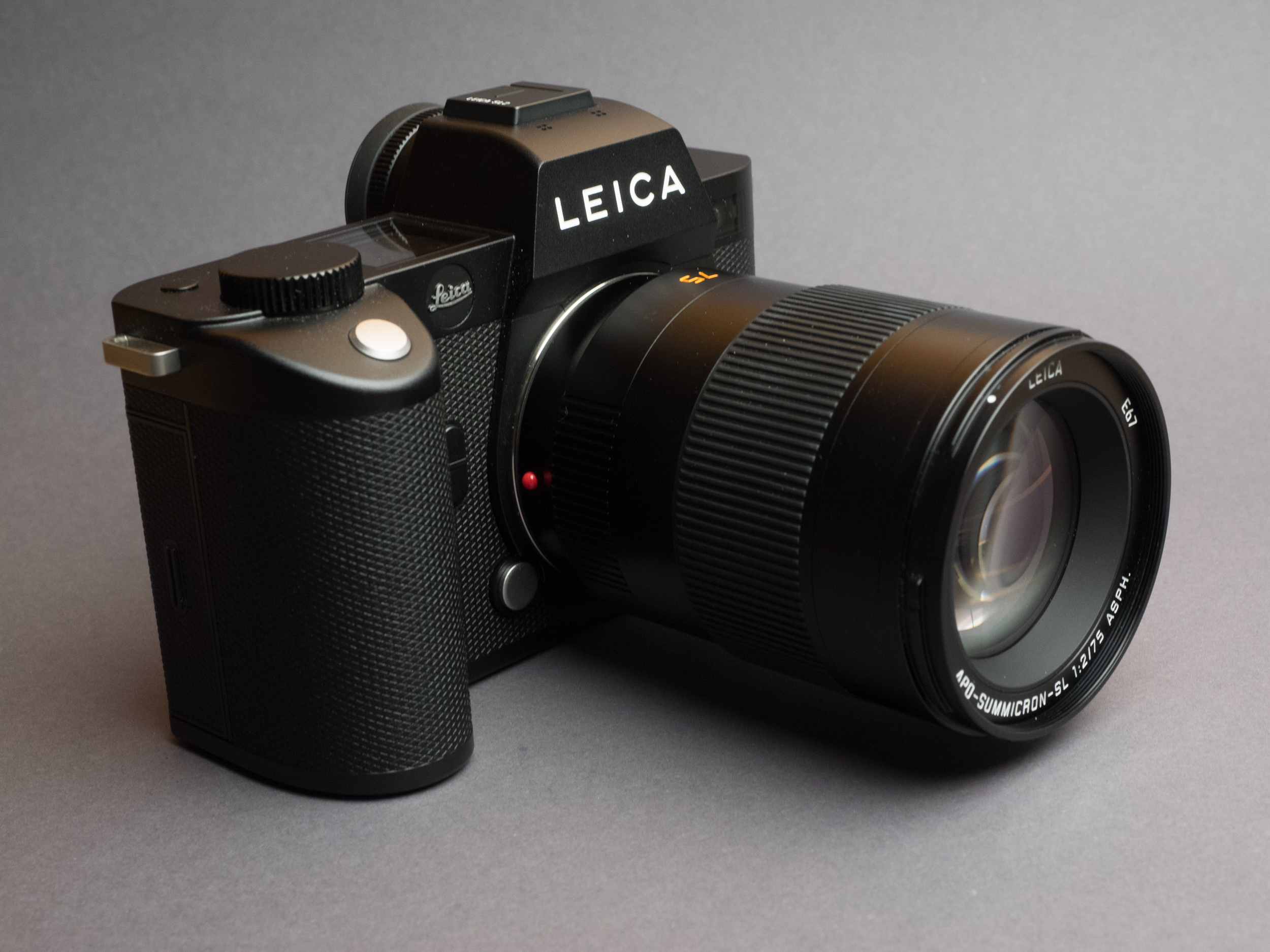
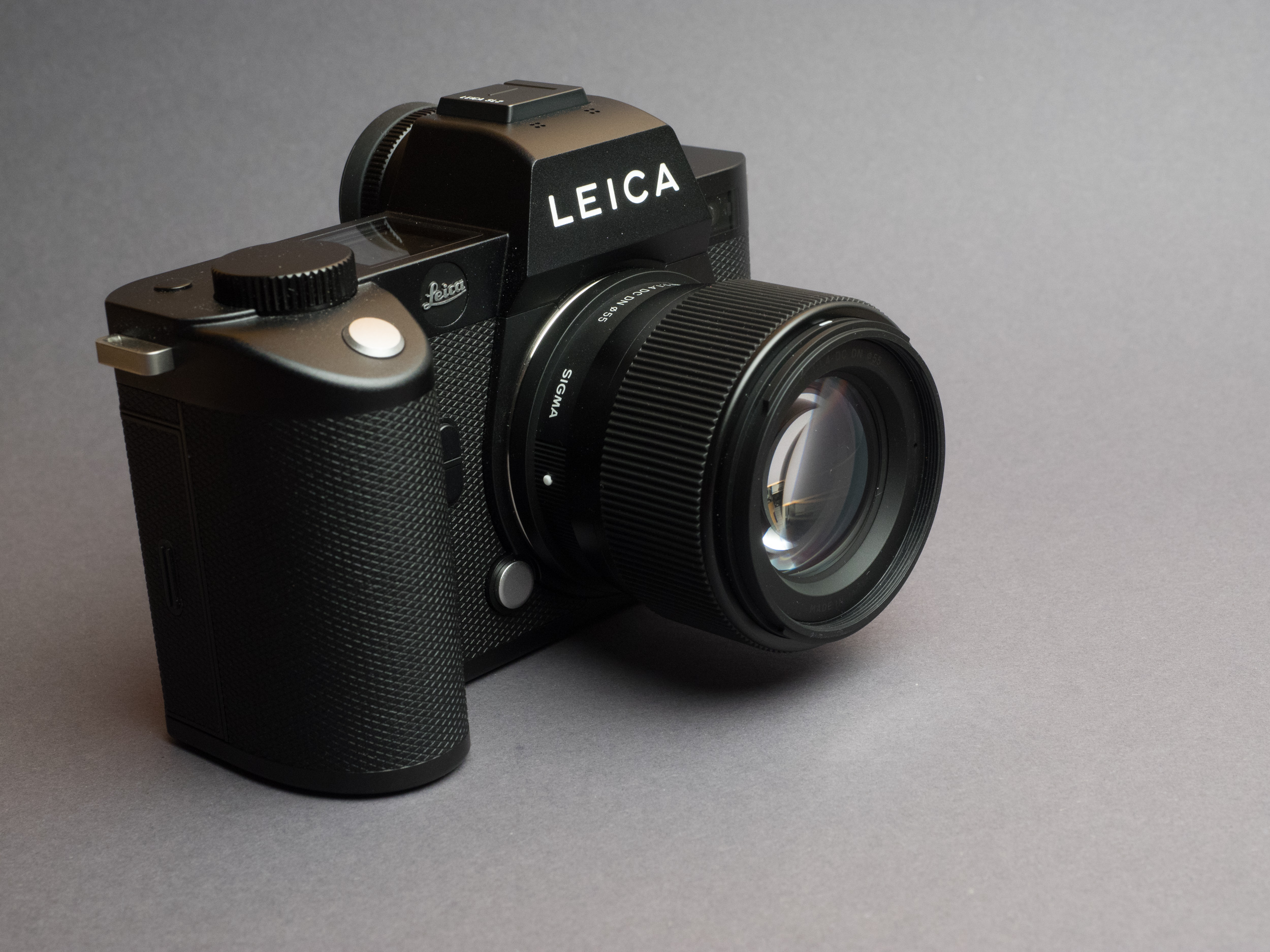
The SL2 is a great all-round camera, and if you need a smaller file size, Jono Slack recommends using the 24 MP jpg mode. That may be sensible with full frame lenses. But with Sigma or Leica APS-C lenses, I would not deliberately limit the camera’s resolution. Great performance with M mount lenses is another argument for the SL2, but we’re in APS-C lens territory.
Leica SL2, overall impression:
The SL2 is a wonderful platform for Sigma or Leica APS-C lenses, and in some respects, it will only reveal the full potential of these optics thanks to good autofocus and excellent IBIS. The downside is that it has twice the weight and takes far more room in your bag than a CL. Inobtrusive shooting in Leica M style with all the comfort of a modern camera is not what you will get. If you are aiming at this, you might want to think about selling your Leica and Sigma APS-C lenses once you have no working camera body left that fits your needs and defect to the Fuji camp.
Leica SL2’s main pros: Leica build quality, user experience and design; excellent image stabilization; excellent viewfinder; fast recording onto normal SD cards.
Leica SL2’s main cons: Massive size and weight when coming from an APS-C camera; very high price; fixed rear display; high ISO limitation.
Panasonic S1R
Panasonic S1R, a quick overview:
If you were to describe a camera that is the complete opposite of the Leica CL, you would probably mention huge dimensions, excess weight, an awful lot of buttons and switches, a somewhat brutal appearance – but also a state-of-the-art electronic viewfinder, powerful in body image stabilization, USB-C charging. In other words, you would end up with something much like a Panasonic S1 series camera. Within this series aimed at professionals, the S1R is the high-resolution variation with 47 Megapixels in full frame and 20 MP remaining with APS-C lenses. I give some more key technical data in the chart at the end of this article.
Panasonic S1R, handling:
If you don’t mind a heavy and big camera, the S1R is actually quite nice to handle. Well, I am used to Panasonic’s S5, and this one is very much based on the S1 series layout. So, I had no problem working with the S1R right away without even consulting the 500-page manual. If you are new to Panasonic cameras, you may want to take some time to get accustomed to their specifics and their menu system. Again, it’s the diametric opposite of Leica’s reduction to the indispensable.
Panasonic S1R, general performance:
The S1R gets a lot of image quality out of the 20MP part of the sensor, which is not surprising given its 100 points DXO rating. The camera has a very natural way of rendering colours. Nothing appears to be aggressively processed, colours are almost restrained, sharpness seems reduced (for the sake of not having artefacts), and noise becomes visible from rather low ISO values (I would say, between 400 and 800).
On the other hand, the user can take care of all this in post-processing, and the RAW files leave much room for improvement to the user’s taste. Only in the high ISO region, above 3200 or so, do you see the price you have to pay for a 2019 high-res sensor: Noise is becoming quite prominent. Despite these limitations, I think Sean Reid’s favourable assessment from 2019 is still valid two and a half years later.
Panasonic S1R, APS-C performance:
No Sigma or Leica APS-C L-Mount lens has image stabilization, so the S1R’s IBIS is a revelation. You suddenly see the image though your 55-135, for example, nailed in sharpness. This alone is pure joy. Add to this very good 20 MB RAW or jpg files with lots of detail and (see above) much headroom for post-processing, and you are likely to see a remarkable improvement over the Leica CL. High ISO performance is similar, but you will need ISO values above 1600 far less often, thanks to IBIS.
Panasonic’s auto-focus was much discussed, and I think the new Sony, Canon, and Nikon mirrorless cameras are a step ahead. But compared to the CL, I would rate the S1R’s AF better — that is, more precise and much faster (you will be surprised what you can get out of your APS-C lenses). In any case, it is easier to operate with a four-way joystick-like switch and very sensible options. That’s how it should be… we all know of the firmware update for the CL that Leica never delivered despite our Editor’s more than justified calls.

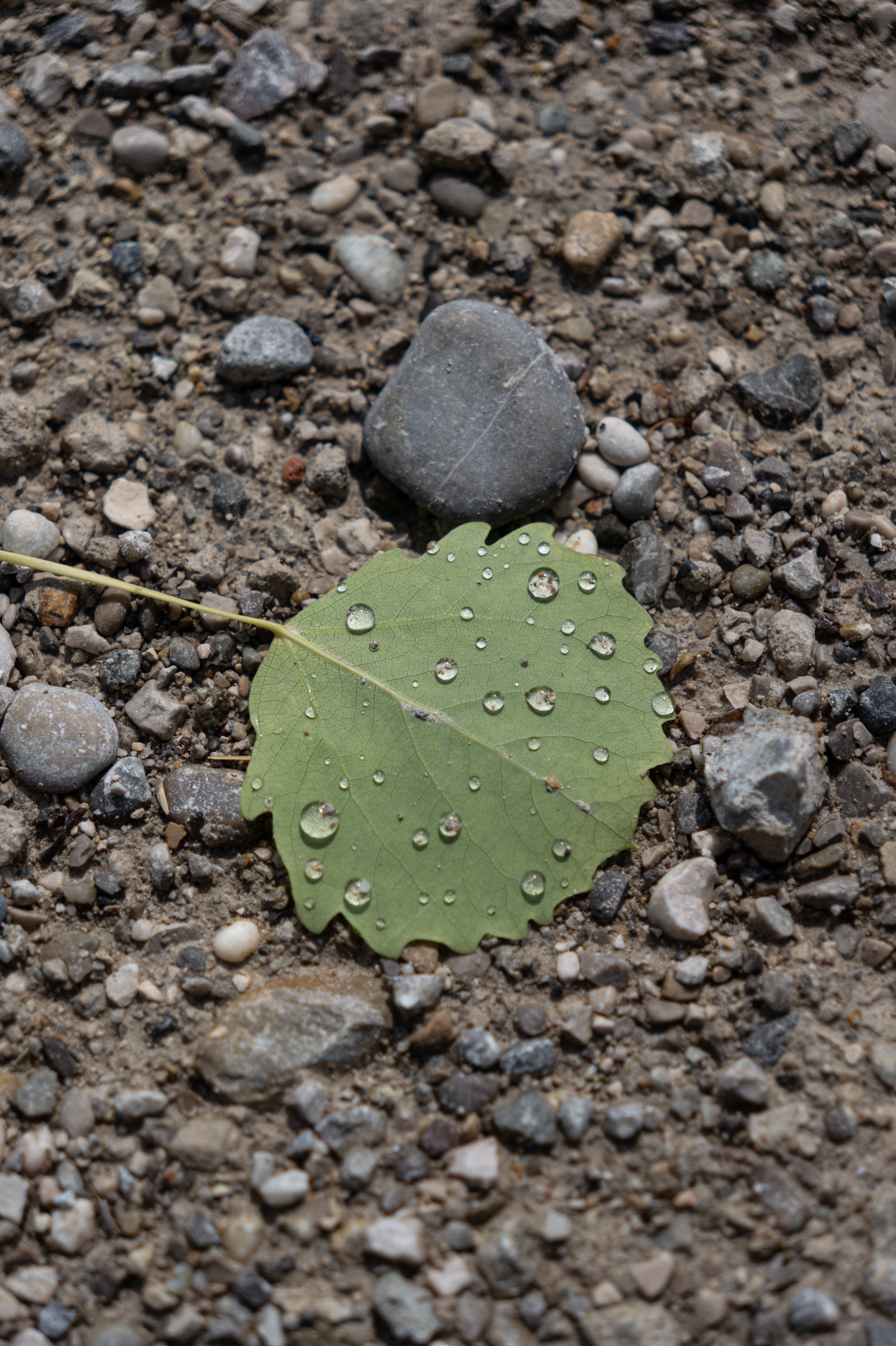
Panasonic S1R, overall impression:
The Panasonic S1R is a giant camera which can deliver outstanding results. The smaller APS-C lenses somewhat mitigate the camera’s huge size. Insofar, it is not such a strange fit as you might think in the first place. Or in other words, the handy APS-C lenses turn the S1R into a camera that can be the core of a kit for everyday and travel use. Add this at an affordable price. So, all in all, it’s not such a crazy option.
Panasonic S1R’s main pros: Build quality, robustness, moderate price (negotiate), good ergonomics, excellent image stabilization, articulating rear screen, and great EVF.
Panasonic S1R’s main cons: Enormous weight and size, complex handling, two different memory cards (one SD, one XQD), slightly limited AF speed, and limited high ISO abilities (above 3200).
Sigma fpL
Sigma fpL, a quick overview:
Think of a brick with a front and a back as its biggest surfaces. The front side consists almost only of a bayonet mount with a sensor shining in shades of all colours inside. The back is almost completely taken up by a big display and a few buttons on the lower end and to the right. Some more switches and buttons are on the top: Sigma fpL is the second iteration of their full frame mirrorless camera. It’s a radical piece of gear in its smallness. Hard to believe how much technology they put inside.
The fpL is slightly thicker than the original Leica T but otherwise smaller. And that with a sensor more than twice the size (measured in area). Its 61 MP resolution results in almost 26 MP in crop (APS-C) mode. This is even a bit more than Leica’s latest (and, alas, last) APS-C cameras, the CL and the TL2.
Sigma fpL, handling:
In practical use, the fpL (and I think this is also true for the 24 MP fp) is special, to say the least. It has neither a handgrip nor an electronic viewfinder (you can add both and buy the fpL in a kit with the EVF immediately). Nonetheless, the handling of the camera is much better than I had expected. Most functions are easy to reach; the menu is overwhelming in its options but quite logical to me; the camera lies well in my hands. Attaching the optional EVF is a bit fiddly, and, unfortunately, you can’t charge the camera with the EVF in place. If you don’t want to remove it every time the small battery is empty, you better buy the extra charger (BC-71, €110!) and at least one spare battery (BP-51).
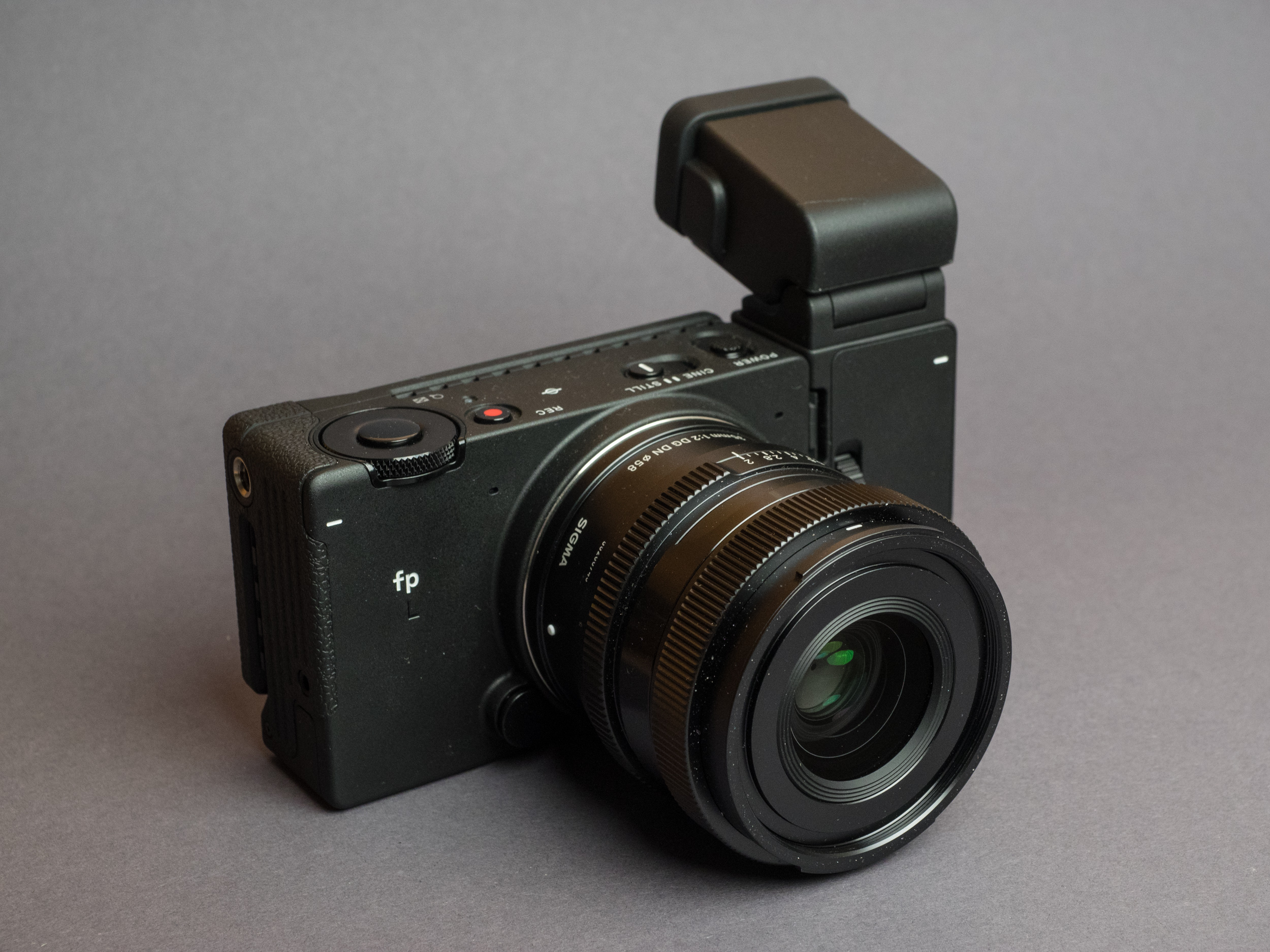
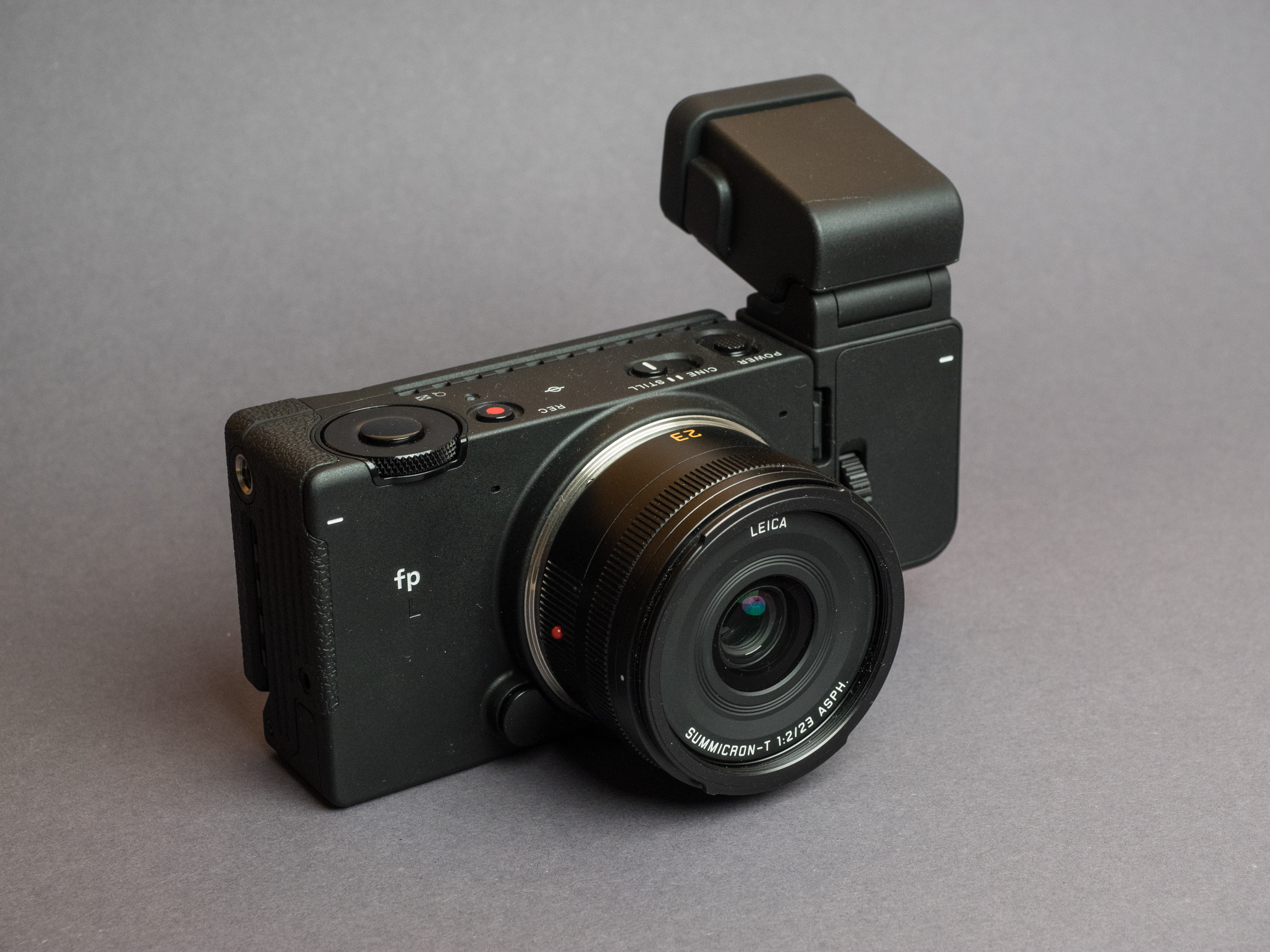
Sigma fpL, general performance:
As unusual as the concept of this camera is, as contradictory are the results (read here Patrick Leong’s in-depth review). On the one hand, the 61 MP back-side illuminated Bayer (not Foveon!) sensor offers stunning image quality up to very high ISO values (6400 and beyond, that’s quite an achievement with such a high resolution). The hybrid autofocus (phase and contrast) is quite reliable once you have managed to get all the settings right. Exposure control and colour rendering are spot on.
But there are severe disadvantages, too. The fpL has no mechanical shutter at all. At the same time, sensor readout takes some time for the whole glory of a 61 MP image. The results are rolling shutter effects, poor flash performance and bad images in fluorescent light (the shorter the exposure, the worse the result). And the lack of a mechanical shutter or cover over the sensor (a common disease nowadays) is not for the faint-hearted when changing lenses.
Sigma fpL, APS-C performance:
With its 61 MP sensor, the fpL is a good fit for Sigma or Leica APS-C lenses. The image circle of these optics will cover a part of the camera’s sensor that still has 25.8 megapixels. That’s more than enough for almost any purpose. I recently had a 24 MP M10 image printed to 90×60 centimetres, and the result was great. So what more could you wish for? Even cropping is possible, and the very good high ISO performance compensates a bit for the lack of image stabilization.
Being so small, the fpL is arguably an even better body for the rather small Sigma and Leica APS-C L-Mount lenses. Think of the full-frame lenses, which are often huge. With a small lens, the fpL is almost pocketable in size and a great piece of kit for landscape, still life and architectural work. So if you do not want to shoot fast-moving objects or if you don’t use flash, the Sigma fpL could be a good travel companion together with the small lenses (if you like his reviews: Steve Huff draws a direct line from the original Leica CL to the Sigma fpL here).
Sigma fpL, overall impression:
Genius or madness? The Sigma fpL is somewhere in between. As a photographic tool, it provides wonderful image quality if the conditions are right. This is also true when used with Sigma or Leica APS-C L-Mount lenses when the sensor can show all its qualities in crop mode. For many use cases, however, this small and well-built camera suffers from the absence of a mechanical shutter. This leads to problems you can’t take care of in post-processing.
Sigma fpL’s main pros: Small size (especially without the attachable electronic viewfinder), low weight, the highest resolution of all L-Mount cameras; great image quality; reasonable price; articulating EVF if attached.
Sigma fpL’s main cons: No mechanical shutter (bad for flash photography, fluorescent light, or moving objects); AF could be more reliable; handling needs getting used to.
And now, it’s up to you…
If you have to choose between the three, the decision might be not easy. All three cameras have their strengths and weaknesses when used as an APS-C body. Maybe Sigma will release their long-announced L-Mount body (also) with an APS-C sized Foveon sensor – this could be a game changer. Sigma’s lasting commitment to the L-Mount seems to be an encouraging sign for their further plans after all.

Will Sigma continue Leica’s APS-C genealogy?
And who knows, as Sigma have some beautiful APS-C lenses (surely, not developed for L-Mount but for systems with larger market share such as Sony E or Fuji X), maybe they will fill the gap Leica have left with an affordable, nice and easy to use APS-C body. And be it only from a technical standpoint, it would be interesting to see how they updated their latest APS-C sensor, the CMOS from the SD1 Merrill, back in 2012.
Sigma or Leica APS-C lens owners: Don’t sell in panic
For now, the best owners of L-Mount APS-C lenses can do is use them on their CL or T(L/2) cameras. Whether or not it is advisable to bunker a spare body just in case, I do not want to comment. I think the Leica lenses will hold a certain value while their Sigma counterparts (lovely products, I have to repeat it) will not fetch decent sums on the second-hand market. At least until Sigma come up with a camera that is a perfect fit for these lenses. Until then, full-frame cameras in crop mode are the only option — and remains the question remains whether someone really buys a, say, 47 MP camera to use only 20 MP.
So let’s keep our fingers crossed. If Panasonic, Sigma or, rather unlikely, Leica, come up with a higher-res full-frame camera similar to Sony’s Alpha 7C or an APS-C body which is as small as the new Canon EOS R10 or Nikon’s Z50, this could be a great option for owners of Leica APS-C lenses (and for the ones how have invested in the beautiful Sigma APSC-lenses).
In five years: Where will our Sigma or Leica APS-C lenses be? On a camera? In the drawer?
So it may not (yet) be a dead end, but we have to face it that L-Mount or better Leica APS-C is not a living sub-system either. The options I have shown will not be fully convincing for those who once opted for a Leica APS-C camera such as a T(L) or CL for very good reasons (compact, great ergonomics, superbly built). We’ll see if Sleeping Beauty will be kissed to life again or if these lenses will sadly end up as undead in our drawers.
What do you think? Is a full-frame camera in crop mode a viable solution for Sigma and Leica APS-C L-Mount lenses? Or is it an incredible waste of potential image quality? If you are coming from APS-C – what will you do? Look for a spare CL or TL2 body, just in case? Or sell the lenses once your camera is broken (and will no longer be fixable because of Leica’s policy to guarantee* only six years of servicing)? Was APS-C L-Mount for Leica the wrong way, were they just unlucky to attract enough customers or has the success of the M and Q line just dulled their senses for the less affluent target groups?
*edit 01 August: in an earlier version, it was written that Leica offers only six years of servicing. As Jono Slack pointed out in the comments below, they guarantee it for this time but might be ready to offer service beyond this span as long as parts ect. are available.
Read more from Jörg-Peter Rau
Want to contribute an article to Macfilos? It’s easy. Just click the “Write for Us” button. We’ll help with the writing and guide you through the process.

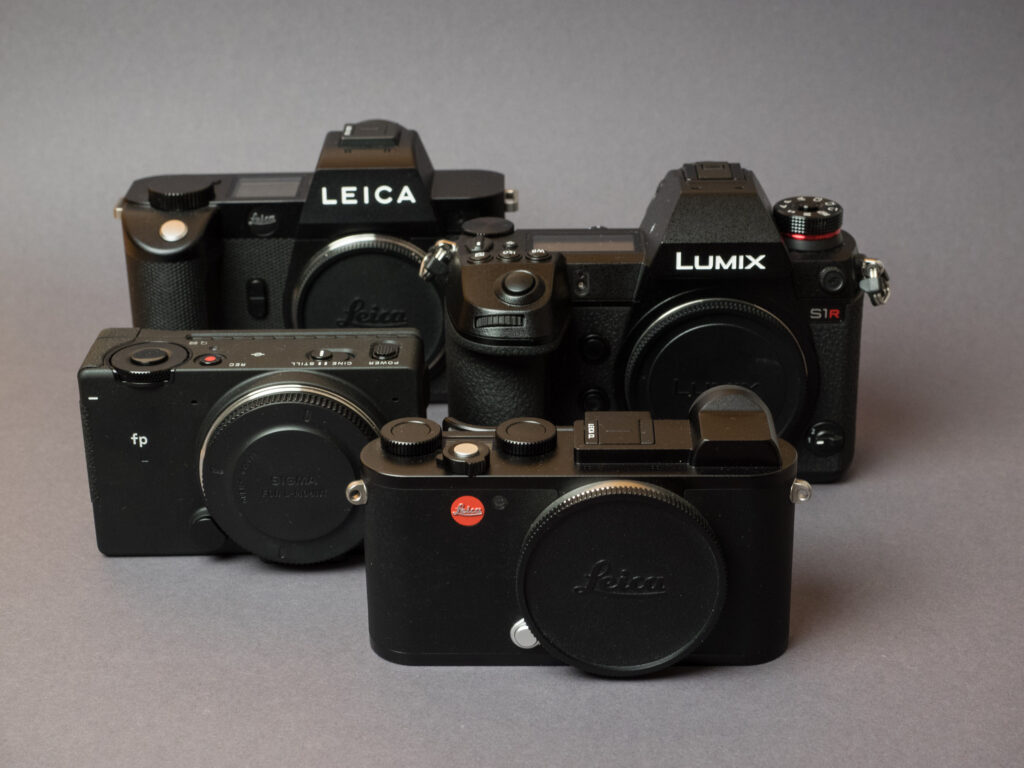
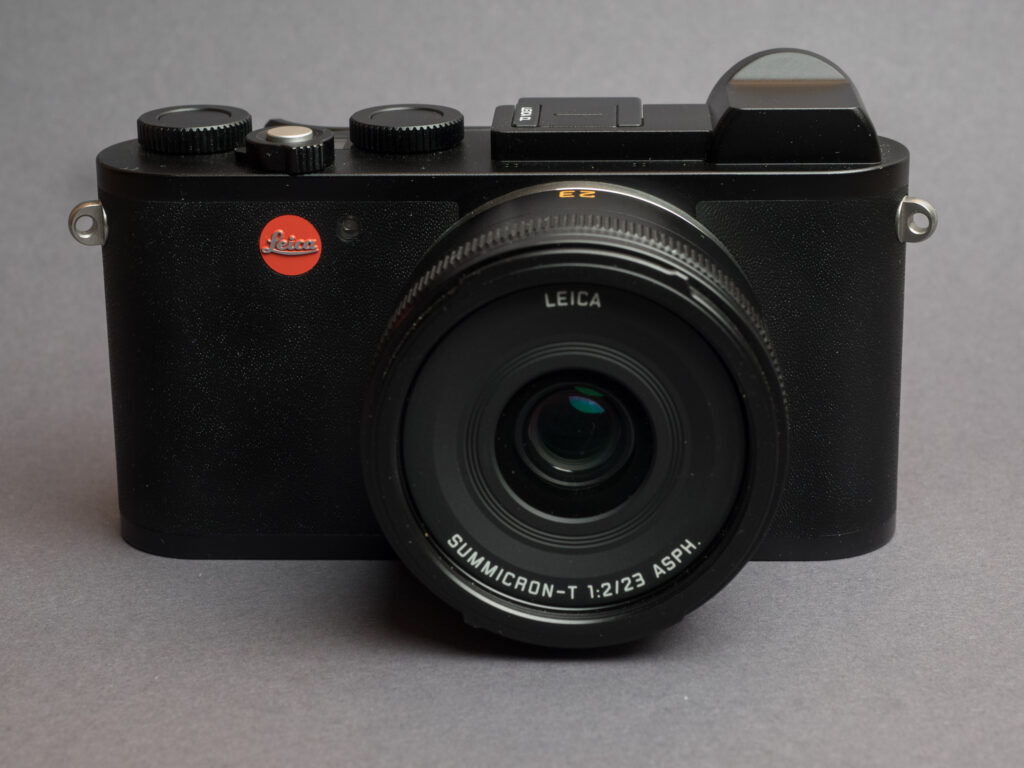

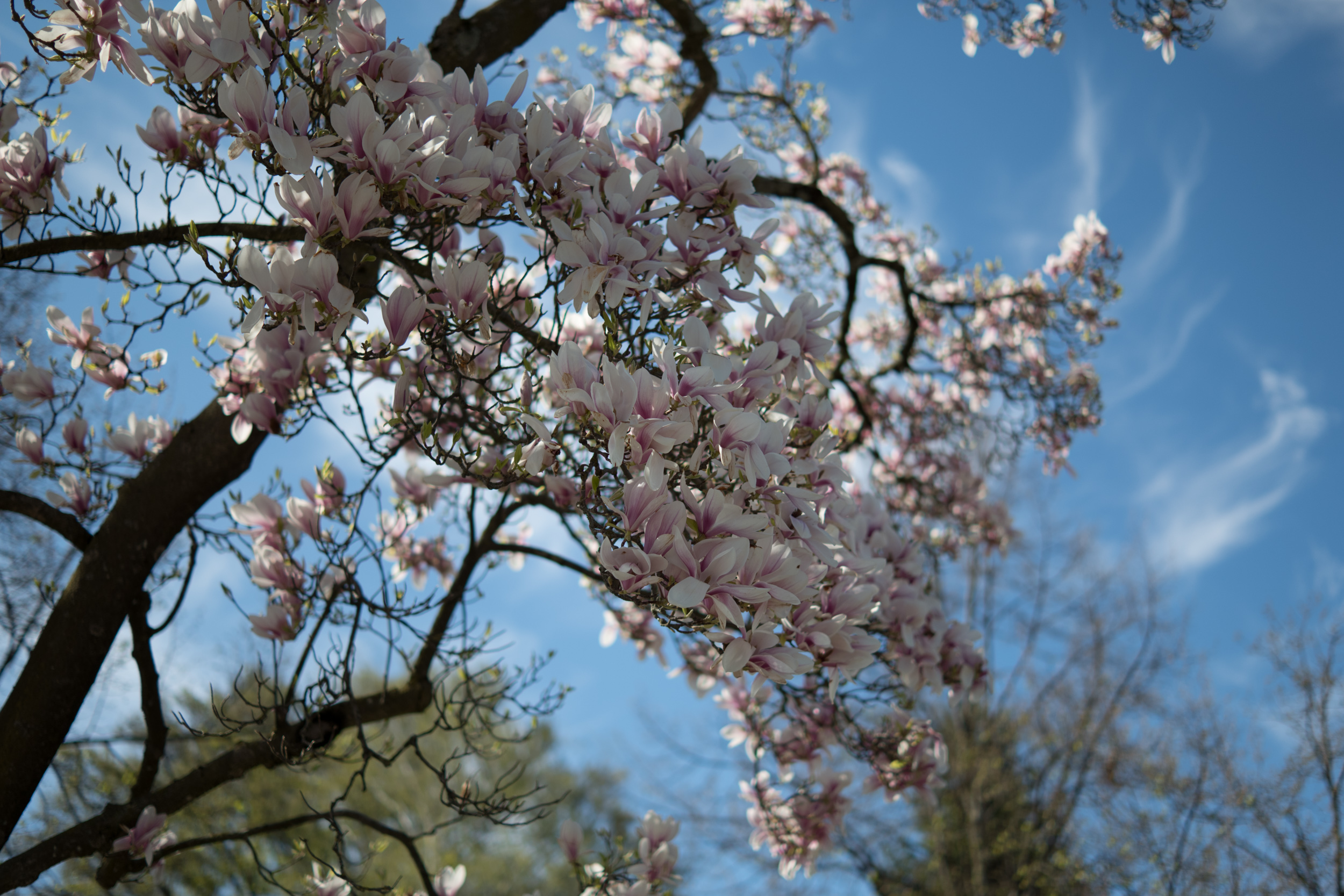

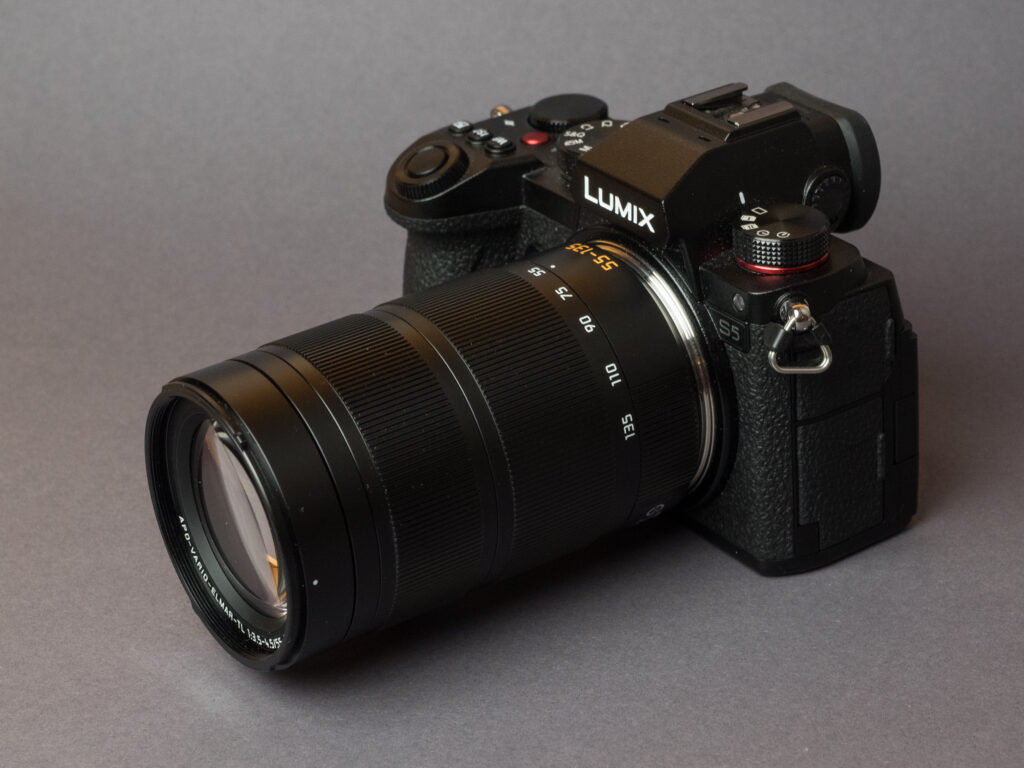
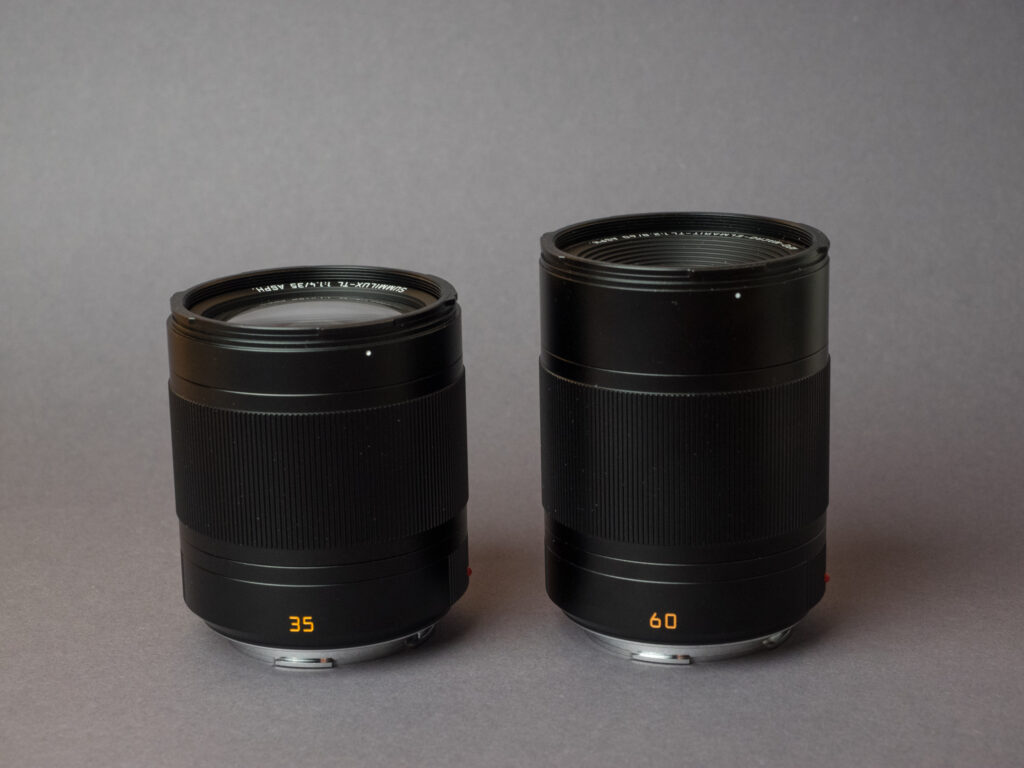



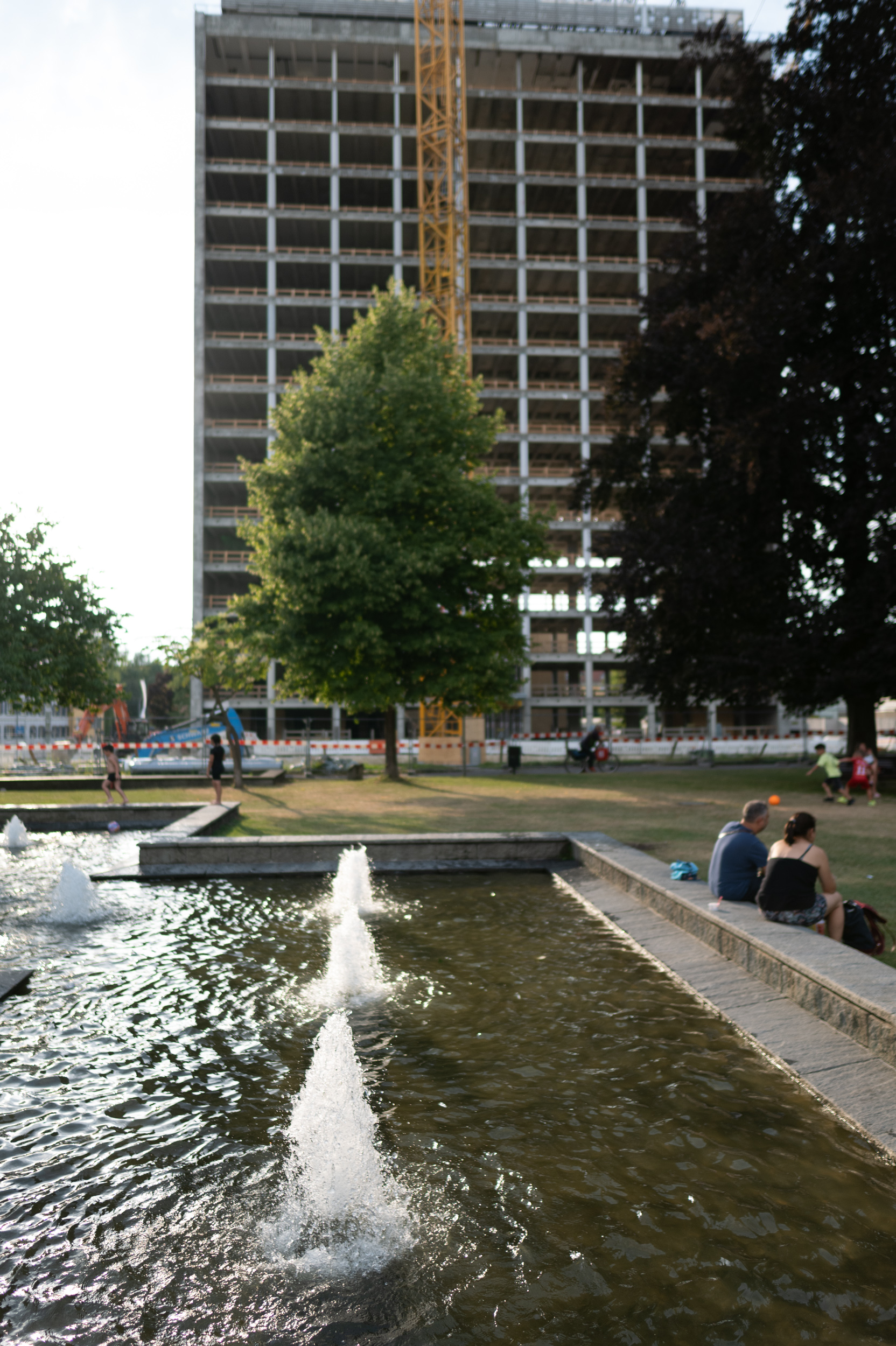

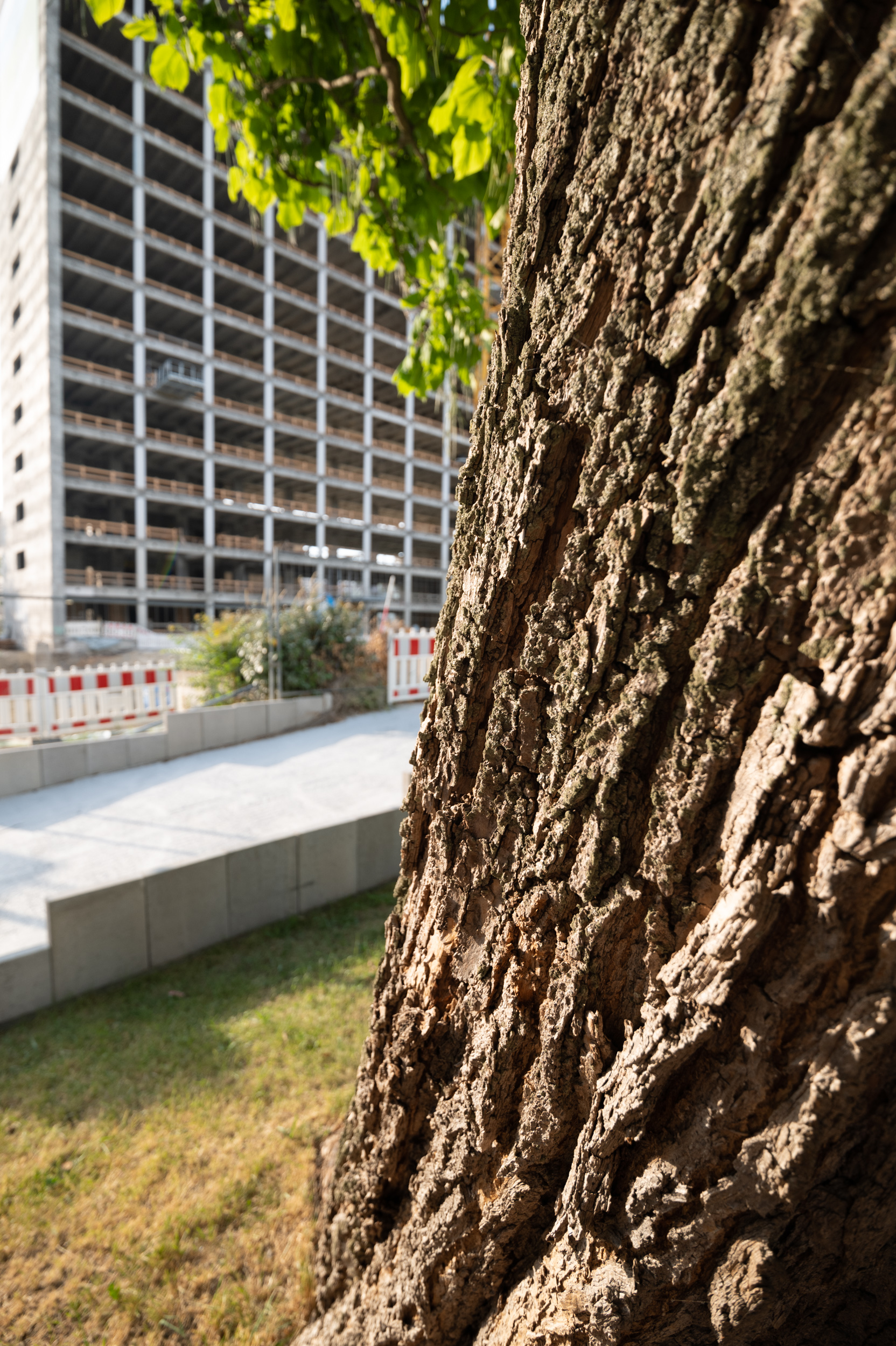


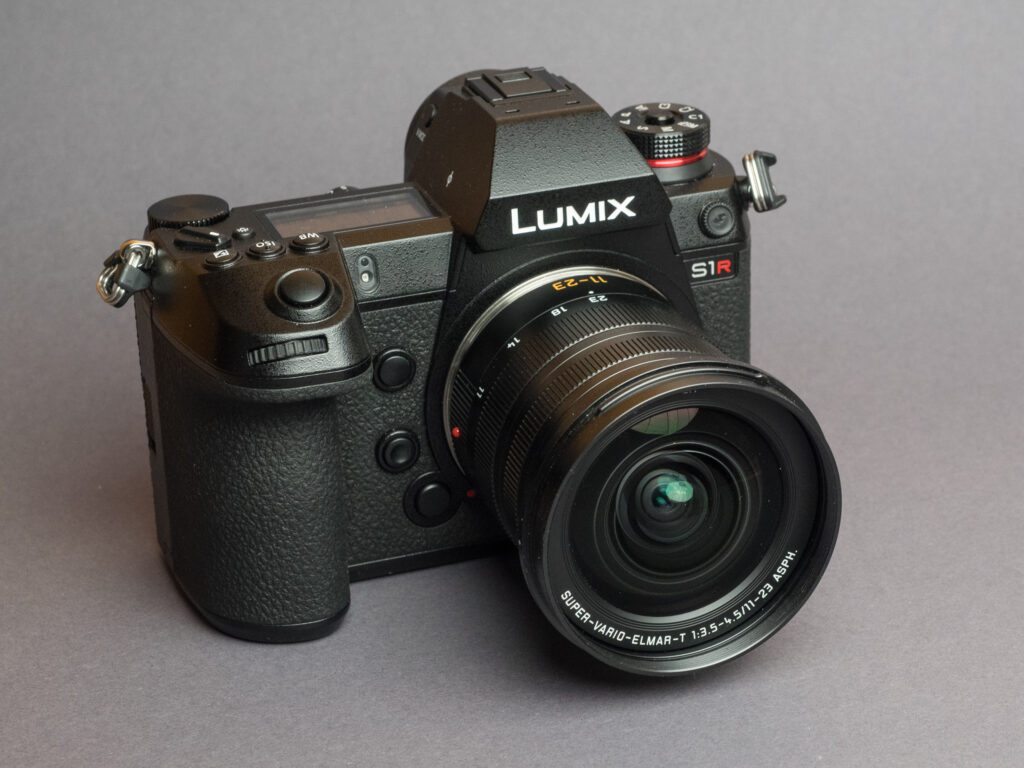



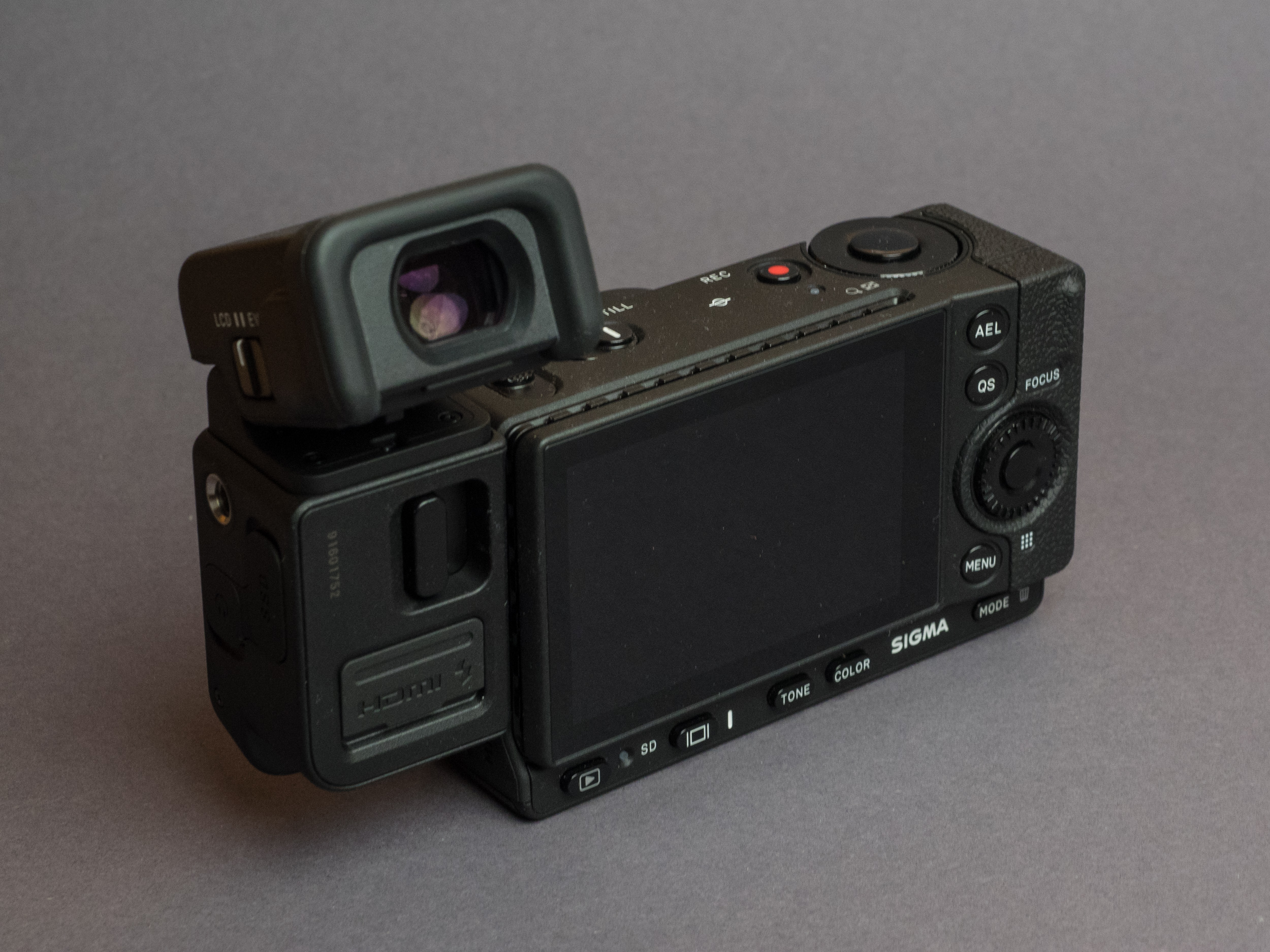

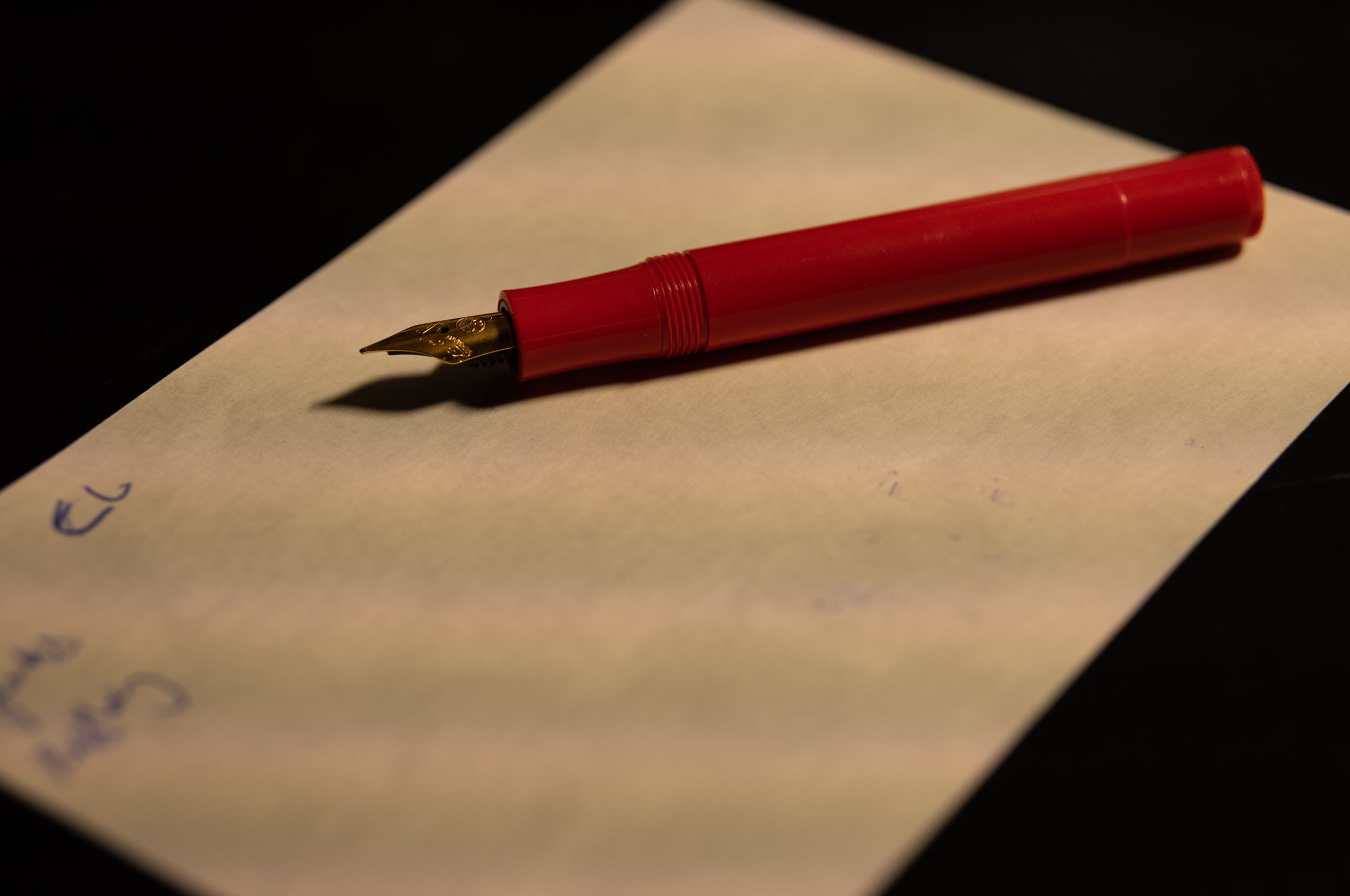
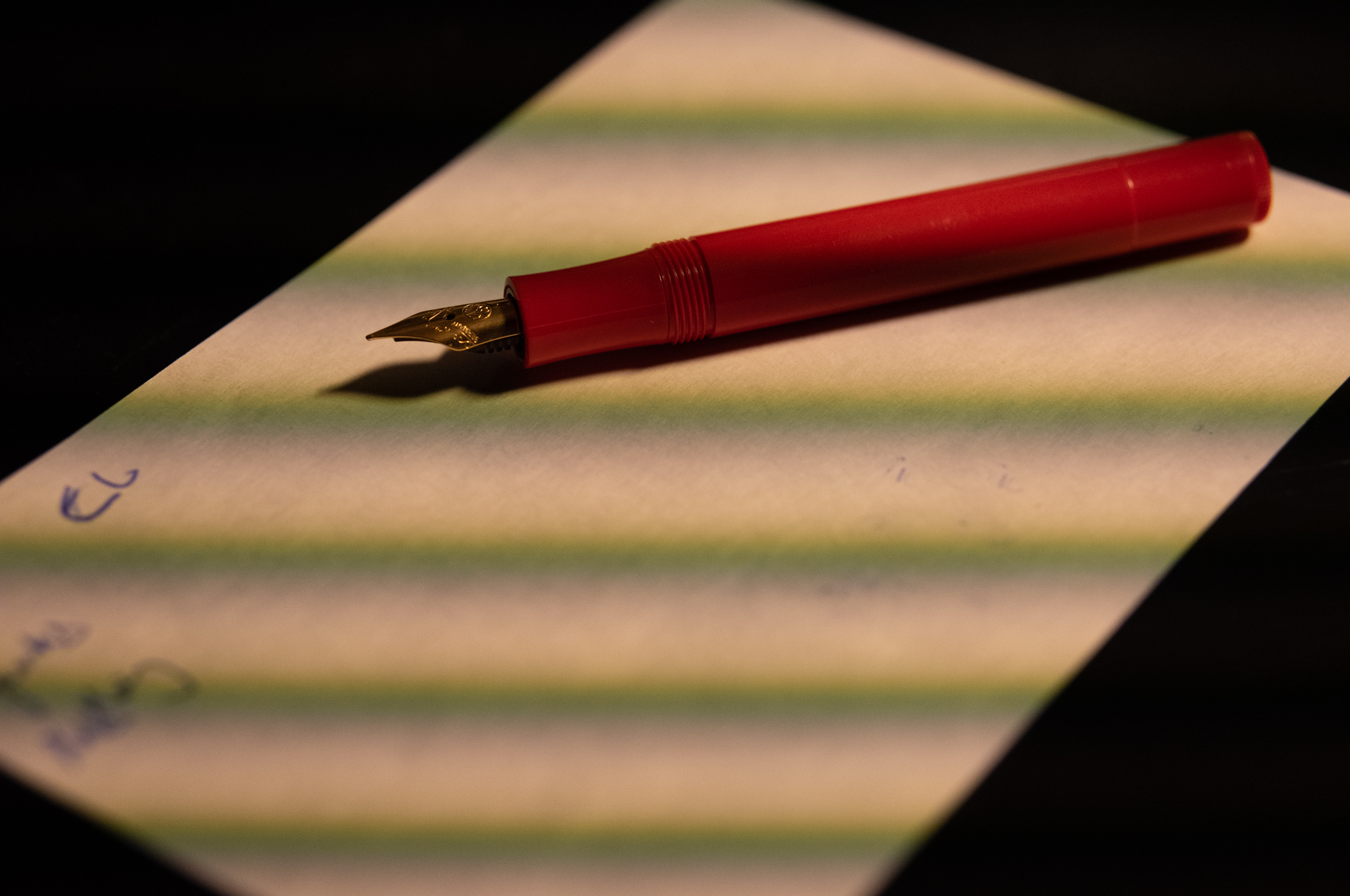

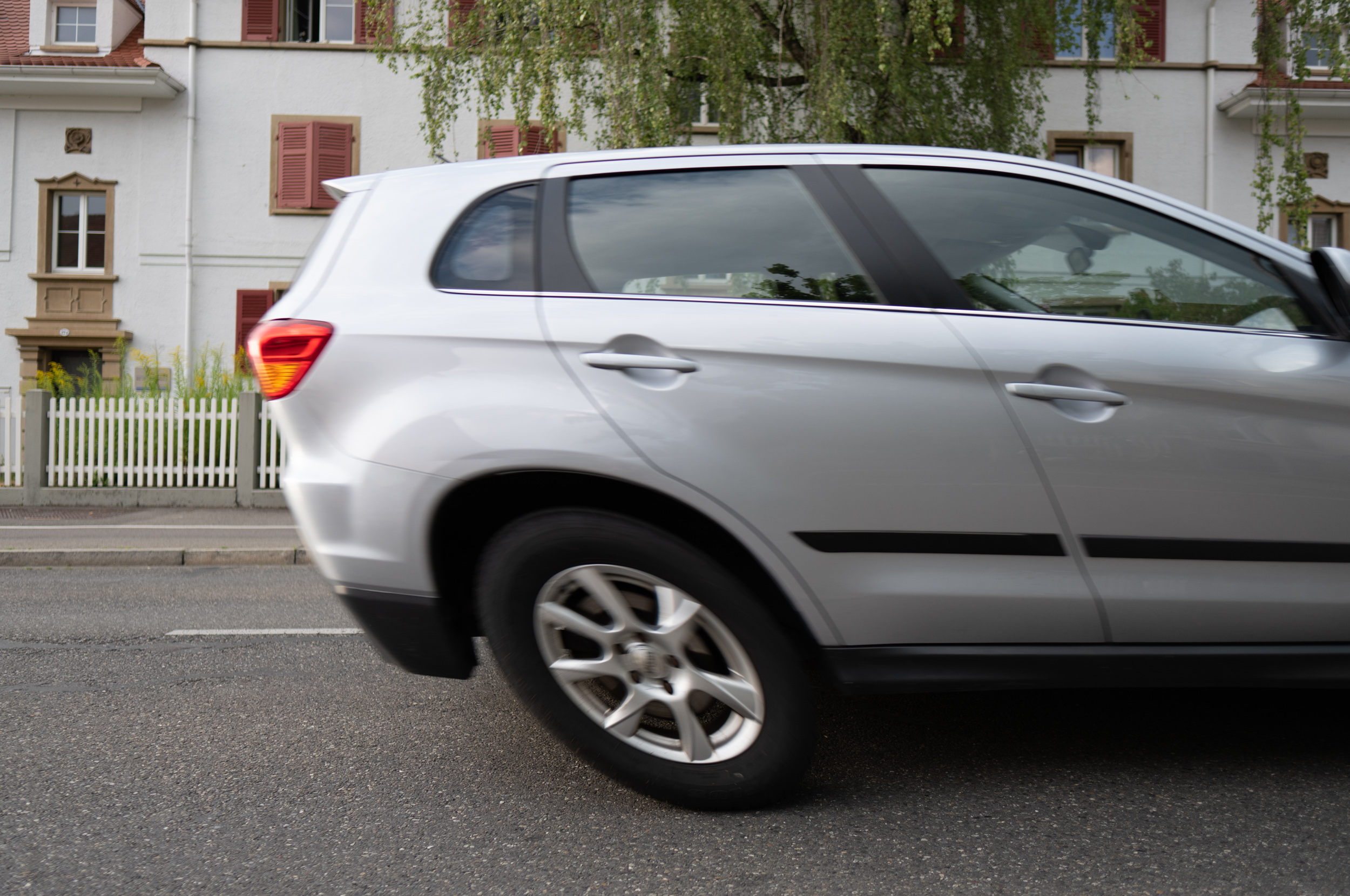


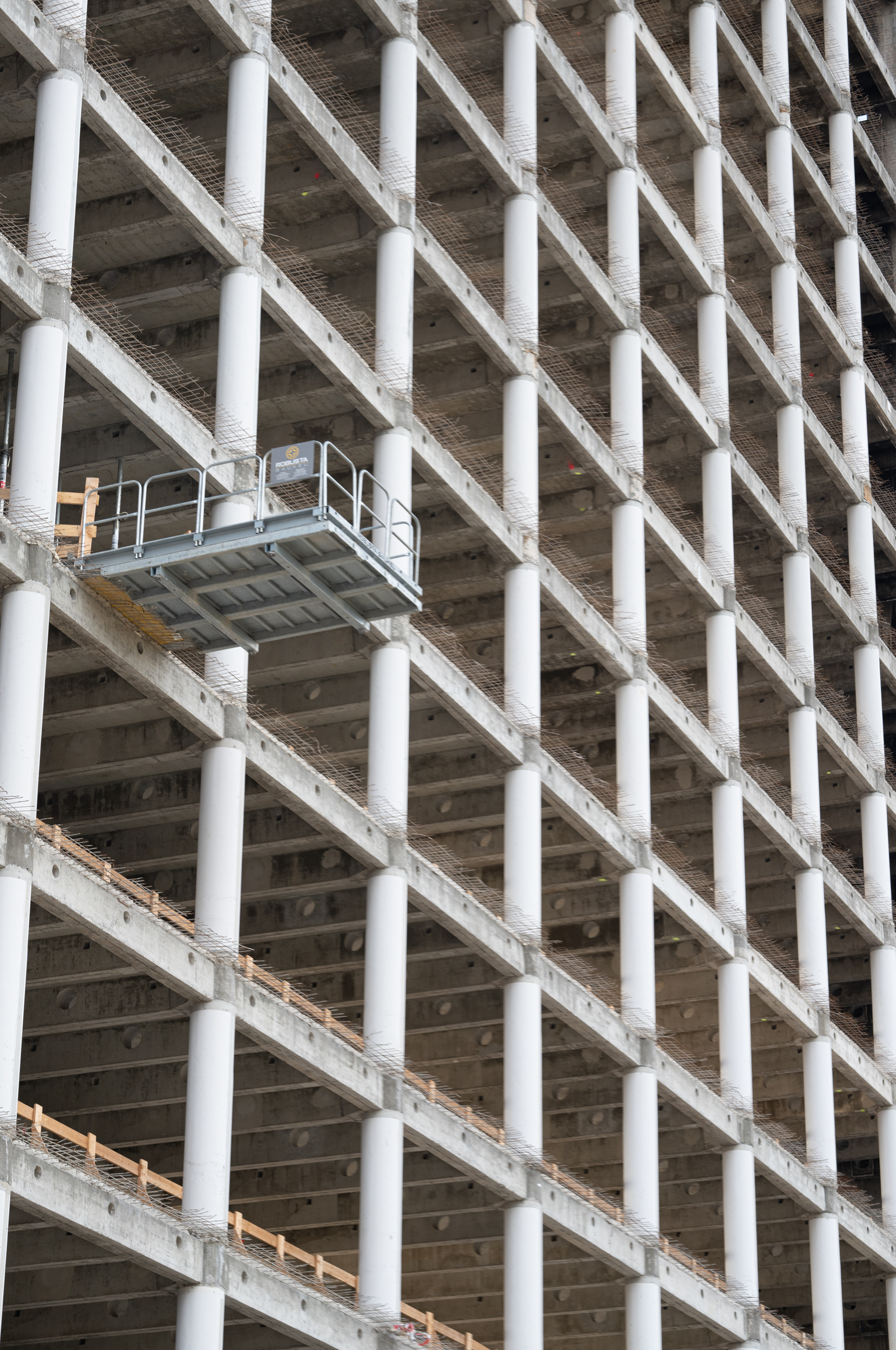




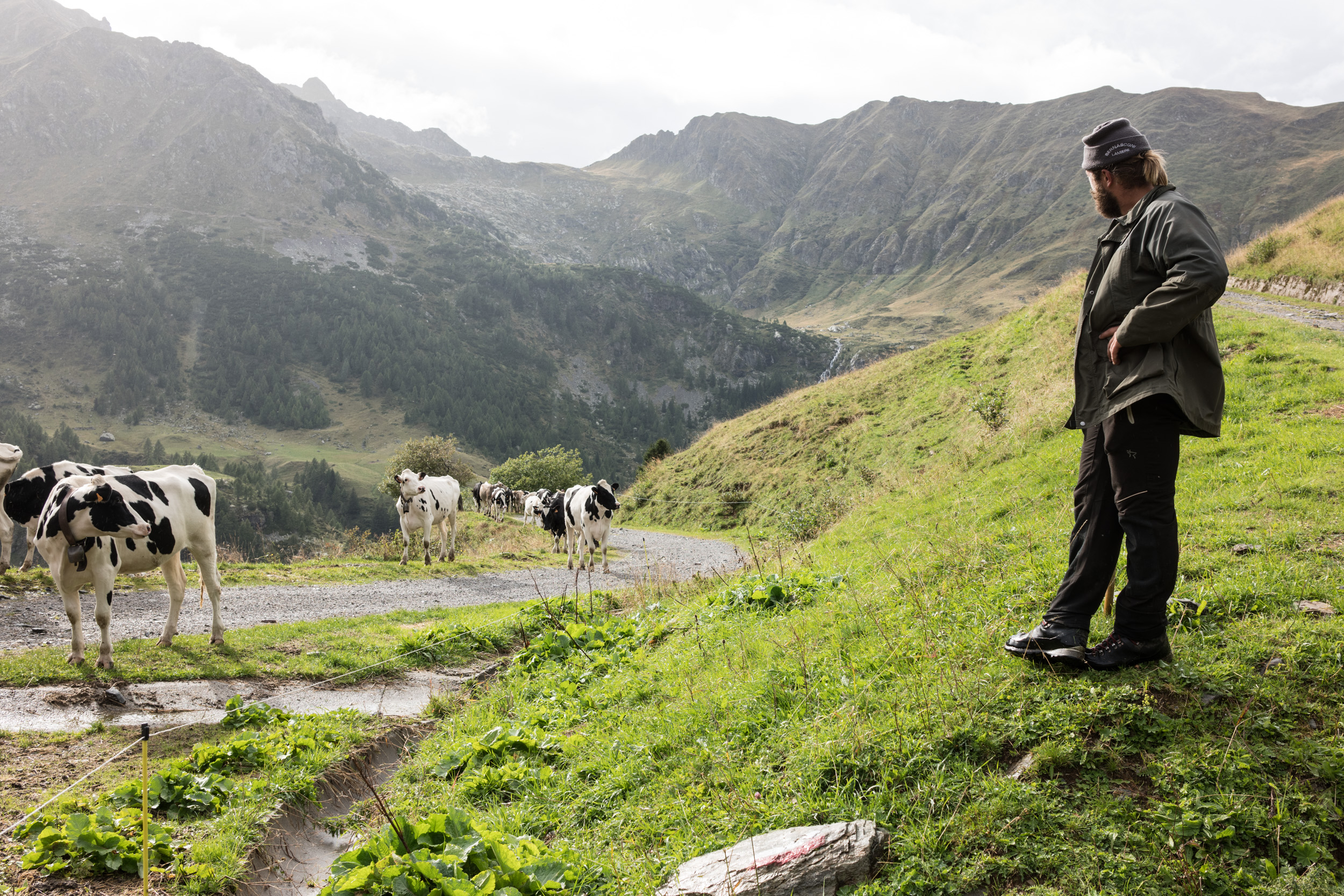





I have the TL2 with the 18-56mm and 18mm lenses. I plan to use this camera until it breaks (hopefully that’s not for several years). I’m just surprised that there is no market for a mount that allows the lenses to be used on other APS-C systems.
Hi, One other option not discussed is that Sigma offers a service to change the mount on your sigma lenses. I don’t know what it costs, perhaps a reader has used this service. You can google it and it comes up on the Sigma web site. So those of us who have bought sigma L mount lenses do have the option of getting the mount changed to Sony or Fuji.
I always use EVF setting in the CL. Checking now the Display EXTENDED and AUTO settings, it just doesn’t seem to work!
Some clue about possible reason?
Perhaps try cleaning the viewfinder, most often that is the problem, I use Auto and if I do not get the image back on the LCD after taking my eye away from the viewfinder I usually need to clean the viewfinder till it works again.
Many thanks Slowdriver. It works after cleaning; both auto and extended. Thought perhaps due to some other setting (or eye sensor failure). Anything to save battery in the short sufficient CL
Sounds good; a equivalent 18 lens. Although they still have the option of Fuji x mount and mft
FWIW, not sure what this means but I read that Sigma just patented 2 new L-mount lenses. Interestingly enough one of these two is APS-C, ie. a 13mm f/2 lens. Perhaps they know things we don’t know (yet)?
Great article Joerg-Peter, really well put.
Seems to me that if you love your CL then the answer is to keep on using it (and the lenses). I keep hovering on the brink of buying one for myself.
Just a word about fixing the CL in the future – you say :
“(and will no longer be fixable because of Leica’s policy to offer only six years of servicing)”.
I spoke to Leica at length about this, and it’s clearly a ‘worst case’ situation. Truth is, they make money from servicing cameras, and as long as the correct spares are available they will likely fix them – Basically they guarantee to fix them for six years, but that really doesn’t mean they’re going to stop fixing them after 6 years. So that really, your sentence should replace ‘offer’ with ‘guarantee’
All the best
Difficult to understand that a popular camera is left at the side of the road.
Don’t believe so, but perhaps the “best case” is they keep on making a CL successive, or even CL itself.
Thank you very much, Jonathan, for adding this important infomation. I edited the post above in the sense you pointed out. I hope Leica’s customer service will do the very best they can for many years to come. And yes, the CL is a wonderful camera. A CL2 with IBIS and a few more improvements would have been so nice… Thanks again. JP
I see the challenge to the six year rule in a slightly different way – how many did we sell, versus reliability issues, versus servicing and niggles. A fairly hefty equation to resolve.
For me it all starts with the live number on the streets that will define the longevity of support.
Does M7 have stopped being serviced? I don’t think so, I have a 2007 one. Why CL won’t be so?
Nice words but when I read that X cameras are already no longer being serviced/repaired I am not exactly expecting much from Leica beyond those 6 years… Also, with regards to digital longevity, why did the CL not receive the latest round of L-mount compatibility improvement firmware upgrades, I have read that they had a positive influence on the power consumption of Sigma lenses on other Leica bodies.
Sure, expecting just nothing. Though sounds odd they will be servicing ones and not doing it to others; guess they’ll do as long as they have spare parts.
Don’t know how long has been Fuji Xpro1 discontinued, but they already have parts to replace (they changed my camera battery door). Every company does it. Guess. Except for Leica…
Thanks Peter for bringing up this “interesting” topic. Since the CL is my everyday & travel camera, I don’t need a lens with long focal length. So I only have two TL lenses: the 18-56mm & 11-23mm. For low light situations, I got myself the M-mount Zeiss Distagon 35mm f1.4 for my CL. Fortunately, this brilliant lens can be used on other brands with an adapter since it is manual focus. I did try the SL at a Leica store & was stunned by the EVF but the SL/SL2 & the full-frame L-mount lenses are simply too big & heavy for my need. Also, it doesn’t make sense to use APSC lenses on a full frame camera, why pay for a full frame sensor & just to use part of it? I will continue to use my CL until it breaks & can’t be repaired anymore. With Leica & Panasonic’s new cooperation agreement, I am hoping they will develop a new small (Q size/style) full frame L-mount interchangeable lens camera. If so, that will be my logical upgrade option within the Leica brand in the future. If not, I am hoping other manufacturers will make a L mount to Nikon/Z mount or Fuiji/X mount adapter; this will allow my TL lenses to be used on the Nikon Zfc or Fuiji X-E3.
In my opinion, the Oskar Barnack marketing was actually a good one since the CL is truly portable, easy to operate with very good image quality. What Leica has failed is on the value side, they asked for a high price but with limited features, especially when comparing what other brands were offering on the APSC lineup. The APSC market is still there despite being smaller, many people still want a dedicated camera other than their phones but don’t need or simply can’t afford a more expensive full frame camera. There will always be people like me who need a portable interchangeable lens camera with simply controls & very good image quality for everyday, travel & family event purposes, let it be APSC or full frame. I hope Leica is listening……
Your comment about “why pay for a full frame sensor and just use part of it” leads to a very simple solution for Leica / Panasonic. Develop a single multi-purpose body (preferably a bit smaller than the SL2) and offer it in three variants (Sony do something like this already). A full frame high mega-pixel variant (e.g. Leica SL2), a full frame mid range 24MP variant (e.g Leica SL2S or Panasonic S5) and an APS-C variant. The SL2 and SL2S are nearly identical body wise, why not do the same with an APS-C sensor.
Intersting thought, Tom, thanks for sharing it here.
Probably that’s a viable solution. However, I am not sure if this would be a body that is small enough to remind of the CL at least. On the other side, I have no idea if the sensors make up for such a great part of the manufacturing cost that the three cameras you are describing could be offered at three very different price points. Maybe a stripped-down processor or a cheaper EVF could be integrated in the “smaller” models but then again I have no idea if the market (ie, we and some others) would accept that from Leica of all manufacturers.
JP
I am sharing your hope, Patrick, for Leica to listen. But I am doubtful…
I agree with what you write in the second paragraph. I did not want so much to criticize the Barnack marketing but very much the way they abandoned this part of their legacy after such a short time. A “portable interchangeable lens camera with simply controls & very good image quality for everyday, travel & family event purposes” is what Barnack’s idea was in today’s words, and this is still a great idea.
As to using only a part of the sensor: I see what you mean but I disagree. If it means that you can extend the lifespan of a few excellent lenses, I would accept this strategy. But of your you would not go for such a solution. If the article opend the discussion on this topic (and it obviously did), I am more than happy! In so far, thanks for sharing your thoughts!
JP
I actually kept the TL2 – for travel — its internal charging (and compact external charger), its solid body, and unique design. Comparing the TL2 with the TL lenses on my SL (and the results on the SL2 I think would be much better) the ease of shooting on the SL – extraordinary evf and body controls, better low-light management than the CL or TL2, the TL lenses in fact often come out the winners even at half the mp count. I’m persuaded by Joerg-Peter to go for the SL2 and larger files together with in camera stabilization – this will fulfill all my present and who knows how long in the future needs… SL2 plus the TL2 as a backup for walking around lightly. I might even – given shaking age constraints unload my M-10 but not the lenses. The same for the Sigma FpL — I’m less persuaded because of many blurred pics – no stabilization, and no lens IBIS for most of the Sigma or Leica lenses I use. So as one of our friends asked a few months ado: “How many cameras do I need?” and I’m rapidly closing in on two.
Rather as ‘SlowDriver I do love my Leica T glass, and incidentally I say because other than my Sigma 56mm f1.4 I purchased all of my lenses new when there was only the Leica T. and as he intimates these lenses likewise in my view are truly special. Since buying them however I moved on via a TL2 through to my present CL, but unlike SlowDriver I have never got on with, or fallen in love with the CL in the way as I undoubtedly did with my original T and the later TL2. So in my case I just can’t see me sort of just carrying on with the CL until it is worn out. That said, fortunately I have kept my original T and I have also tried my various T zooms on my SL with the 11-23 especially proving surprisingly good even with inevitably diminished pixel count. So maybe, just maybe I might keep all of my T Lenses, sell the CL, and move up eventually to a 47 MP SL2 to be able to use them with? Though at this moment the jury is still out.
Hi Don, the T/TL2 is a very unique camera, the CL is more conventional, not so unique, but in my opinion easily the more performant one, that is why I personally eventually settled on the CL, I also have the T and TL2 and I also truly wish Leica had addressed the shortcomings of the T rather than throwing yet another body at the wall, but they didn’t… I also have the SL, I have zero interest in the (even heavier) SL2, I would be interested in a Q-sized ILC L-mount camera but as that rumor is only vaporware right now I will not let it influence any purchasing decisions I might take, if the Q3 sells as well as the Q2 we will get a Q4 before Leica ever releases such a camera, they will IMO only consider it if sales of the Q start slowing down.
I think, SlowDriver, your forecast one the next product launches is very realistic. And aparat from business strategy, there is also a technical side to it. The Q is so small because it does not need to accomodate interchangeable lenses all what is conntected with it (bayonet, shutter, sensor design). So a Q-sized L-Mount full frame body with IBIS, built-in EVF etc. seems not very feasible in the near future. However, Sony showed us that such a product is not impossible with their A7c. JP
We will most likely get an A7c II sooner, hopefully this time not with an underwhelming EVF…
I must disagree. The Sigma FpL is the smallest of all, yet it is a full-frame, 61mp, L-mount camera. While it doesn’t include a mechanical shutter, the only slightly larger CL does include a mechanical shutter, and the Q2/Q3 bodies are larger still. It is difficult to believe that there could not be an L-mount camera of more or less Q2/Q3 size. In the interest of the Barnack legacy—and as someone who would never buy a Q2/Q3 due to its fixed 28mm lens—I firmly believe that an L-mount, Q2/Q3-sized and CL/Q/Q2/Q3-styled camera is the way Leica should go.
Could not agree more, Don, and thanks for your feedback. The T/TL/TL2 are unique indeed, probably a bit foo futuristic for a company with a very conservative clientele. And the 11-23 is a great and rather compact lens indeed. I will use it more often on full frame bodies now. JP
My way forward is pretty simple: keep on using the CL till it breaks down. For me personally it is the only way that makes sense right now. If before that a new APS-C L-mount camera presents itself I will almost certainly buy it. It is rather unlikely though IMO, I can only see Sigma potentially release one. If the rumored Q-sized FF L-mount camera ever materializes I will also consider it. Also rather unlikely though IMO, at least in the nearby future, the same rumors say that it is as least 3-4 years away and who knows what will happen in the meanwhile. My CL body has taken 36,420 pictures so far, or about 7,284 per year or about 607 per month. In my opinion it already paid for itself but the idea that I would need to let go of the glass makes me pretty sad, the glass truly needs a new compact, lightweight, reasonably priced and future-proof solution.
It is. Specially with Elmarit 18. I sold my Sigma 30 though. Going to become worthless soon IMO.
Fuji has really compact combos, for instance XE3+Fujinon 27. That’s really a lightweight perhaps similar or less than the already light and compact combo CL+Elmarit 18, and smaller. But one fourth the price for the very same 24 mp. Even with more features like double exposure etc.
Plain numbers would solve the equation for the Fuji Combo. In practical terms, I got rid of the Fuji one and kept the CL.
Now CL has no continuity solution. And, so, in my view its lenses neither.
George, Thanks. Yes, I am sure I could create a light fuji kit, perhaps lighter than the CL/TL. But that isn’t the point. My point was that Fuji’s lenses in general are bigger and heavier than the comparable lens from Leica. Those TL lenses are small, light and terrific. If you are looking for a small, light system with excellent glass, the CL/TL is still an awesome choice. Even if the CL breaks, those lenses and the SL2 are still a lighter, smaller kit than the comparable Fuji kit.
Hi Rudiger, the SL2 is more than double the weight of the CL and more than double the price, with all due respect I cannot see many people buy an SL2 or SL3 to mainly shoot TL lenses. If you already own one that is different. The people who own a CL as their only Leica camera are switching brands to Sony, Fuji, Ricoh and Canon. At least that is what I read in forums. They are not staying with Leica or with the L-mount alliance. The current options as listed in the article above are simply not convincing enough.
This is an interesting conversation, Rudiger, George and SlowDriver, thanks for sharing.
I would agree that the SL2(S) has a lesser impact in a kit when the lenses are small and lightweight (that’s a question of maths). On the other hand, many of the newer Fuji cameras are not that small (I once owned the XE2 which was really handy, but the XT series bodies are quite big for my taste).
Whether or not a SL body makes sense for people who only or mainly shoot TL lenses is anonther question. My topic was to show what possibilites exist. Selling your L-Mount APS-C gear altogether and changing to another system is another option for sure, and I am certain some will go for it (I would be the last to not understand such a step). The second hand prices will tell us soon how it develops.
In so far, everyone may decide if the options in the article are convincing. I can only say that these are all compromises and none of them is close to perfect.
JP
Thanks to you, Joerg Peter. Interesting article. As usual from your side. Yes, it seems Fuji is going bigger, even in price with XH2S. What to do in this dead end of L apsc system? You got your options
The two recent articles about the CL/TL really got me thinking. DP Review shows critical data for lenses and cameras. Let’s compare similar kits for Leica and Fuji, consisting of the following: Leica CL18, 23, 35, 60, 11-23, 18-55, 55-135 with both the CL and SL2 cameras. Then do the same with comparable Fuji lenses. Fuji clearly has more options, so some choices have to be made. Then add either the XT4 or XH2S camera to complete the Fuji kit.
This analysis yielded very interesting results. The Leica kit with the CL camera was the smallest and lightest at 2,165cc and 2,236 grams. The next smallest/lightest kit was the SL2 with the TL lenses at 3,002cc and 2,749 grams. So just over a pound heavier than the CL. The XT4 and similar lenses consumed 3,543cc and weighs 2,995 grams (246 grams / 0.5 lbs heavier). Who knew? When we upgrade the Fuji lenses (16-55 vs 18-55) and camera (XH2S vs XT4), Fuji shifts to 4,159cc and 3,588 grams (so twice the volume of the CL/TL kit and 1,352 grams or almost 3 pounds heavier than the CL/TL kit).
Personally, as I get older, the extra size and weight makes a much bigger impact on me than the potential image quality difference, aperture/iso or few extra megapixels. And I suspect those TL lenses will work just fine for the rest of my life. Of course, Fuji has other interesting capabilities, many more lens/camera options, and continues to upgrade their lenses and cameras. Unfortunately, those upgrades seem to make both cameras and lenses bigger and heavier.
Thanks Joerg-Peter for this most interesting article. I don’t own any TL lenses and stick to my Ricoh GXR (12 MP) and The X2. I used to own a Leica M8 and 10 MP was more than enough even for large prints. I did some panoramic prints 120 cm by 40cm with the M8 and I regularly print 75 /50cm with the GXR. 10MP are more than enough for A4 and A3 prints. The most important is to have a good lens. The Elmarit 24mm on the X2 is absolutely stunning and the 2 Ricoh modules (28 and 50mm equivalent) are really excellent lenses. Thanks again
Jean
You’re welcome, Jean, and thanks for your feedback. In fact, the resolution race is more driven by marketing strategies than by technical needs. And no algorithm can heal what a bad lens did wrong. That’s what I often think when I use my nine year old OM-D E-1 MFT camera. It has “only” 16 MP, but the 12-40 and the 40-150 are increbibly good lenses and show, as zooms, better performance than many primes. JP
Agreed,10MP is plenty good enough. We have just become spoiled with lots of MP these days. If you can believe it, my first exhibition was with A3 prints from a Minolta Dimage 3MP camera and nobody complained about lack of resolution.At 10MP you already have enough pixels for post editing to a high standard unless you are making heavy adjustments. I’m pretty sure an SL2s for example with TL lenses will be plenty good enough for high quality results.
Absolutely agree.
Unless you are Platon and printing A0 on a machine bought from NASA after a team of four have worked on the high res scans in photoshop for a month, there are a lot of wasted pixel out there 🙂
You are so right, Steve. But if you understand how the photographic industry has been acting in the past years, it’s clear where the megapixel race is coming from. After fast circles of real innovations in the first ten year of digital photography, the pace has slowed down. In order to keep sales high, especially in the high end of the market, alterations with ever less marginal benefit seemed to be a good strategy. JP
Thanks, Steve, for your feedback. We will see how second market for L Mount APS-C develops. As usual at Leica, demand has risen since it became known that Leica discontinue something (that’s what I see in prices and what I hear from dealers). And I fully agree, if 10MP are enough for you, the SL2-S or the S5 are excellent options. And as I wrote, 24MP are enough for almost everything. I had and image printed to 90×60 cm (36×24 inch) from the M10 at high ISO, and it looks great. What more might you need? So yes, yes, yes, don’t worry and go out to take pictures. JP
Great article. A quick look on that online auction site showed me there are, as yet, no bargain TL2 bodies out there as a back up to mine. If market forces are at work then there is still a market out there.
Other thought I had is that the APS-C lenses do fine on the SL2-S. As you point out, this only gives a 10mp file but, as most people are reducing the final jpg output for social media/ website/ sharing via text all these photos end up being reduced to 1-1.5mb files anyway.
Having a small, light, lens does come in handy (e.g., Sigma 30mm f1/1.4) when walking around with that in mind. As for printing, do you really need more than 20mp for an 8×10?
Which is all only to say that if, like me, you have the SL-2S and a bunch of TL lenses, you shouldn’t be worrying too much 🙂
“ As for printing, do you really need more than 20mp for an 8×10?” I meant 10mp obviously (see above). Argh, I hate typos!
I am perhaps out of step with the majority, but I did (foolishly or not….your opinion is yours) buy an SL2 deliberately to use with M and L APS-C lenses. M gives me wonderful Full Frame results (the SL2 being a wonderful full-frame platform for the manual focus lenses) and the L APS-C lenses give me zoom convenience and very adequate files. I choose the lens to fit the particular assignment at hand. The SL2 is large, but it has all the features I wanted and my enjoyment in using it easily overcomes the negative aspect of its weight.
Interesting concept, Stan, I can immediately understand that this a cool option to work with. Thank for sharing! And as to the camera weight: If you look at the body/lens combination, the low weight of the most M Mount (and of many L Mount APS-C) lenses puts the things into perspective. The question if the SL2 is probably the better option than, say, an M11, is discussed in this article here on Macfilos: https://www.macfilos.com/2021/12/10/rangefinder-versus-evf-or-is-the-sl2-s-the-better-m11/. JP
I found my hit rate with the Leica CL and the 55-135mm to be a bit low due to camera shake. On a tripod it is superb. The 55-135mm on the Leica SL2 with IBIS makes the lens a really great travel companion. If you can live with 20MB images, which are more than enough for me, you won’t be disappointed.
A CL2 with IBIS would have been a dream, sigh… I couldn’t care less about MP or weather sealing. I am pretty sure it would have been commercially successful as well…
Couldn’t agree more, SlowDriver. A pity they didn’t launch such a camera. JP
Hi Joerg-Peter, great article and a valuable contribution to the discussion of life after Leica withdrawal from APS-C cameras! I am coming at this from the opposite perspective – I own no APS-C lenses, but I do own an SL2 and an S5, and so I am interested in the possibility of purchasing used APS-C lenses at knockdown prices (as photographers bale from the platform) that would represent a lightweight complement to my small collection of full-frame L-mount lenses. For example, a telephoto prime would be of considerable interest. From your knowledge of the APS-C lens universe, what long focal length prime would you recommend I consider? Both Leica and Sigma options would be appealing to me. I already have a LUMIX 85mm f/1.8 and so a lens that would give an effective focal length in the 135mm range would be ideal. Any suggestions much appreciated! Once again, thanks for contributing your scholarly article. Cheers! Keith
Dear Keith,
thnaks a lot for your feedback. I always enjoy your articles and images, and they show that both the SL5 and the far more affordable S5 are capable cameras when in the hands of a talented user. I habe no idea if APS-C L Mount lenses will dramatically drop in price (the Sigma ones rather yes, the Leica ones probably not that much).
Your idea concerning a telephoto prime is very interesting but I am afraid I can’t help you there. The longest APS-C primes for L mount I know of are the 56/1.4 from Sigma and the 60/2.8 Macro from Leica. None of them will give you a significantly narrower angle of view than the Pana 85/1.8 you already own.
By the way, I was hoping for such a lens as well, say a 90/2 for APS-C (offering a 135mm FF angle of view) or a smallish 135 FF as well (the Sigma Art is huge and heavy at 1220g). So the only option is the 55-135/3.5-4.5 APO telephoto zoom. This one is excellent and compact, but it is neither a prime nor a fast lens. So let’s hope for a small medium full frame prime for L-Mount. I do not expect that new APS lenses will still be launched.
JP
Good article. I believe I will easily get 8-10 years out of my CL. I have 3 APS-C lenses but only one of them is Leica, the other two being sigma. My last purchase was a sigma full frame I series lens which is small but more versatile in that it can be used on full frame cameras with 24mp.
In 8-10 years who knows where we will be technology wise. As an older photographer I know that my film and processing costs some 15 years ago was up around $500 a year. If I average that amount written off each year against my digital system then I’m happy. So having paid around $4-5k for my current system, if I get 8-10 years then it owes me nothing.
This is a very sane way of looking at it, Russell, and I do hope you have many good years ahead of you with the CL. This is a beautiful camera, and there is no reason to believe it will let you down soon. The critical point, however, could be repair issues. JP
Thanks, Tony,
for your comment and for bringing in a new perspective. I fully agree with you on the value of APS-C lenses. There are some great optics among them. Just like you I am not sure that L mount APS-C is really dead, and I do hope for a new body from Sigma. Leica will not re-enter this market, and Panasonic officially announced that they will not produce something between Micro Four Thirds and Full Frame (makes perfect sense for them).
The fpL is a fascinating camera for sure, and I was sold to the beauty of the rendering. Great colours, a lot of detail! However, I think a camera that is not fully usable in artificial light (be it flash or steady) is limited. And the rolling shutter effect is awful. What a pity!
JP
Thank you Joerg-Rau for this sane article. I have used these lenses on both the SL2 and the Panasonic — even on the Sl they produce great images. Not sure I understand comments that see these lenses as “useless” or “worthless” with the demise of aps-c Leica bodies. They are exceptional lenses according to any Leica standard and will remain so, even as M lenses have remained over decades. The 24+ mp center sensor resolution is equal to the M bodies, and even at 10mp the files are extraordinary at normal size. And APs-c has recently returned in force to new camera bodies — Canon and Nikon for example have produced really great new versions — and for travel and architectural photography they are light weight – and the 30/1.4 is almost equal to my M summilux. I use my TL lenses on the TL2, and for higher resolution on the Sigma Fpl – a camera that because is doesn’t have all the bells and whistles of a Sony equivalent has had a bad rap. I am in fact much happier even than Joerg-Rau with my Sigma – with a little experience and the eve and hand grip to steady the body it’s really fun and quick to use. With the 55-135 it’s a perfect fit.
Hi Tony, worthless “to me”, even though I own the Leica SL (which is BTW almost 3 years older than my Leica CL and probably likely to break down before as well) I have zero interest in buying a Leica SL2 in general, and certainly not to prolong the life of my APS-C lenses. In my mind it simply does not make any sense to buy a camera that weighs a ton specifically to shoot APS-C lenses at a lower resolution. As always YMMV.
Correction: my SL is almost 2 years older than my CL.
About choosing the same mount for APS-C and FF, it was the right thing to do but it IMO not particularly clever on the part of Leica, Leica just observed what Sony was doing the and did the exact same thing. I have noticed this a few times already, Leica sees Sony as the market leader (and one of their biggest competitors) and follows their steps. When Sony revealed the A7c I am sure a few Leica executives must have shit their pants, so much FF power in an APS-C sized camera, high image quality in a small package, much more Leica than Leica, I would not be surprised if the A7C was an element in the decision of getting out of APS-C.
They made a small package with the CL body, but is not L mount bayonet too big for apsc, making this too bulky lenses required, except for Elmarit 18? Even is not also big for ff? 60 vs 50 mm outer Ø. I know it’s of no use at this time of the match…
I see your point, back to film perhaps, life is much simpler there, and I will still be able to shoot the same camera in 10 years time, and additionally it will still have a resale value…
Very true, SlowDriver. Back to film can absolutely make sense. JP
I’m not sure if the bayonet diameter is mainly responsible for the size of the lenses. There is a connection for sure, but I rather think there are other technical reasons as well. The 23/2 is quite small in my eyes, the 18 as well, the Sigma 56 and 18-50 too, and the 11-23 is reasonable when compared with FF 16-35 lenses. – The other question if L mount is really big enough for FF is interesting. Nikon went for 55 mm (L mount 51.6, Canon RF 54), and that was a good idea for sure. – Quite possible that the A7c made the Leica people nervous. Such a camera with L mount would see well, I think. JP
Interesting, how about Fuji? I suppose it is less than 51.6mm?
M mount is 50 mm outer diameter: fully ff
L mount is 60 mm outer diameter both apsc ff
That implies bigger lens. I thought, say, the Fujinon 23 WR was too long, but compare with Summicron 23 apsc L. Most of M lenses, either Leica, Voigtlander etc are definitely much more compact in general than TL lenses. Not to mention SL ones. Even the lack of AF and connection doesn’t justify that difference
PD Fuji X outer diameter is 53 mm, though ring plate is wider
Also, Fujinon 23 wr is actually 67×78 mm (with hood) Summicron 63×37 mm (without hood).
I thought the last was longer but always felt uncomfortable
Dump it all now and just buy Ricoh if you want stay ASPC or buy FX AND BE HAPPY!
That’s also an option, John. But maybe not for all. The article is aimed at people who, for whatever reason, want to keep their APS lenses. One if these keepers is the 35 Summilux TL which is bulky but very, very, good. JP
I feel no enthusiasm for any of the options you mentioned. I am grateful though that you tackled this topic as I suspect many Leica APSC owners have gone through similar assessments of what might replace their cameras.
I tried the SL2 again albeit briefly at the weekend and it’s a lug; only confirming that I made the right choice with the CL. I will continue to use my CL system until it falls apart or another APSC system from Fuji or other becomes irresistible.
Thanks, Le Chef, for your feedback. Well, it was not my intention to evoke enthusiasm, it was just a thinkung about options, and none of them is fully convincing. Some may be ready to live with a compromis (I, for example), others won’t. JP
I am pretty much of the same opinion. I plan on using them till my CL breaks down or till I decide to sell it but my expectation is that by that time the lenses will be worthless to be honest. Not sure yet what I will do with them at that point in time.
That’s also an option. SlowDriver. I guess the CL will be kaputt before the lenses. So I found the idea interesting what you could do with them afterwards. They still have L mount… JP
Hi JP
I don’t get what Leica did right with their APS-C system.
If you mean a 1500, 2000 € or more apsc L mounts can be used toylike in a ff SL (in the case you own one), that’s bit a joke. No, those lenses will become useless if no other apsc L camera is released (fully improbable)
Hi George, what I meant was: They did it right in so far that they did not create a special mount for APS-C but went for a universal bayonet. The question if an APS-C lens makes sense on a full frame body has to be answered by everyone individually. I find the idea less crazy than you. JP